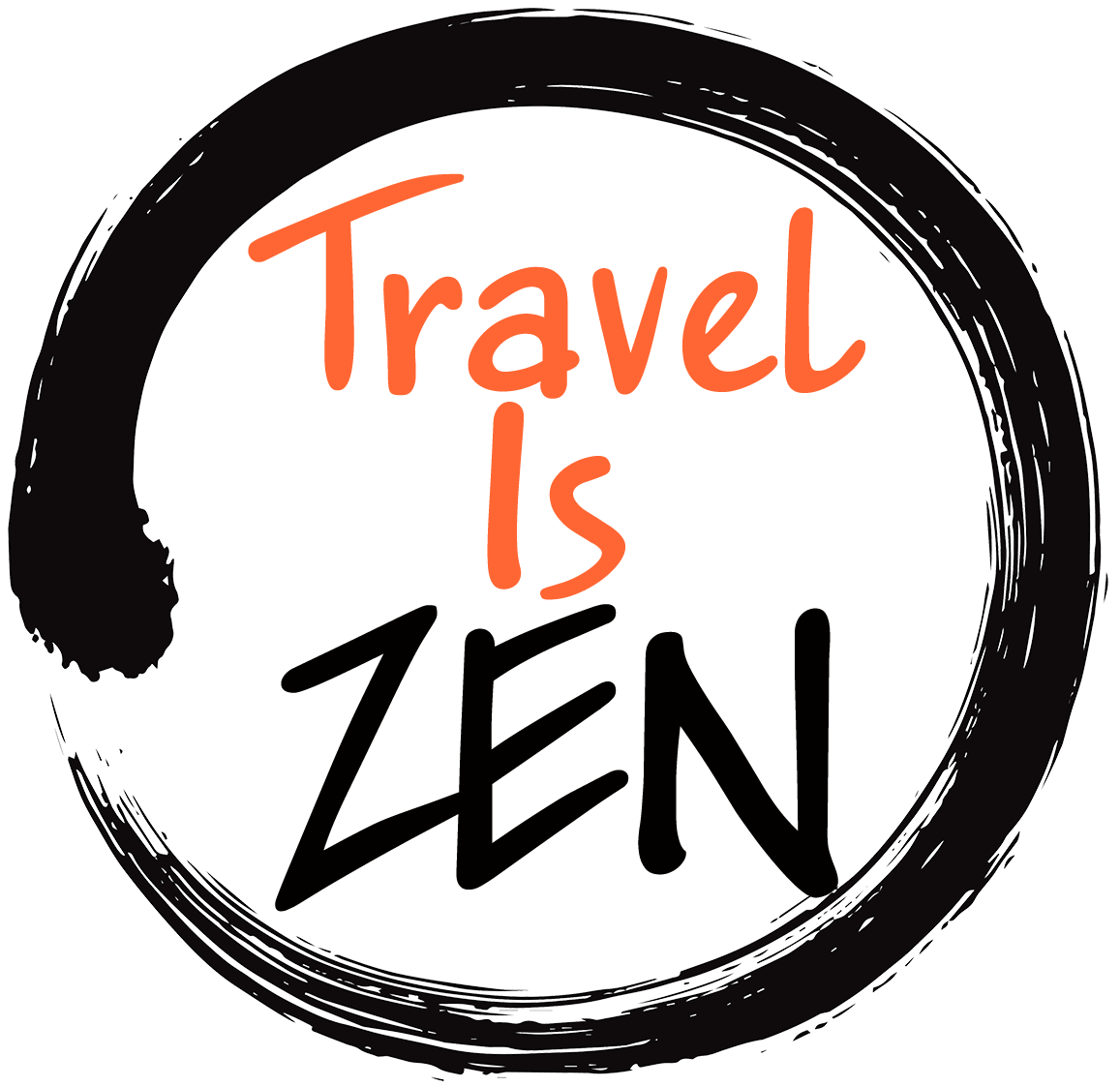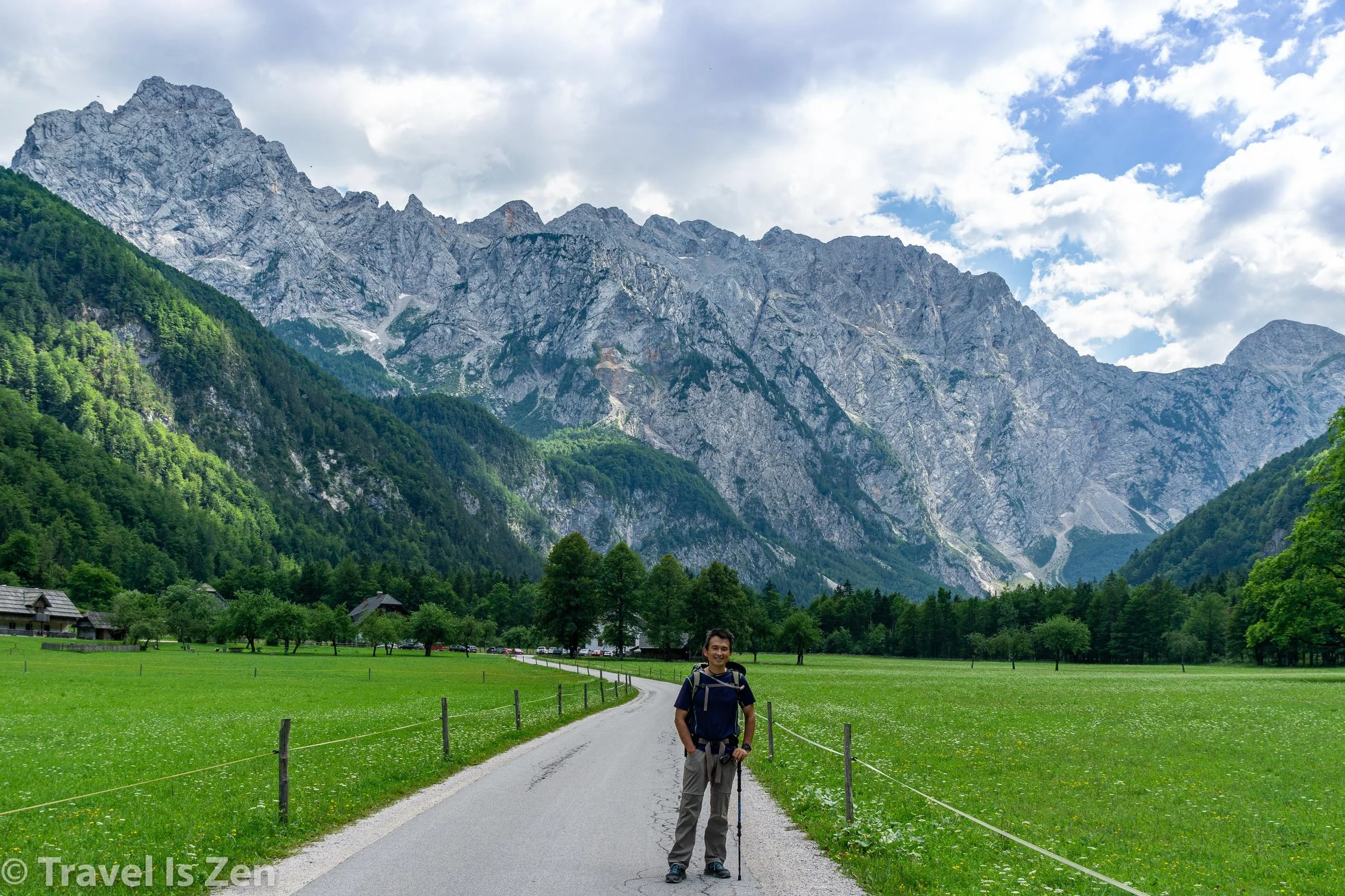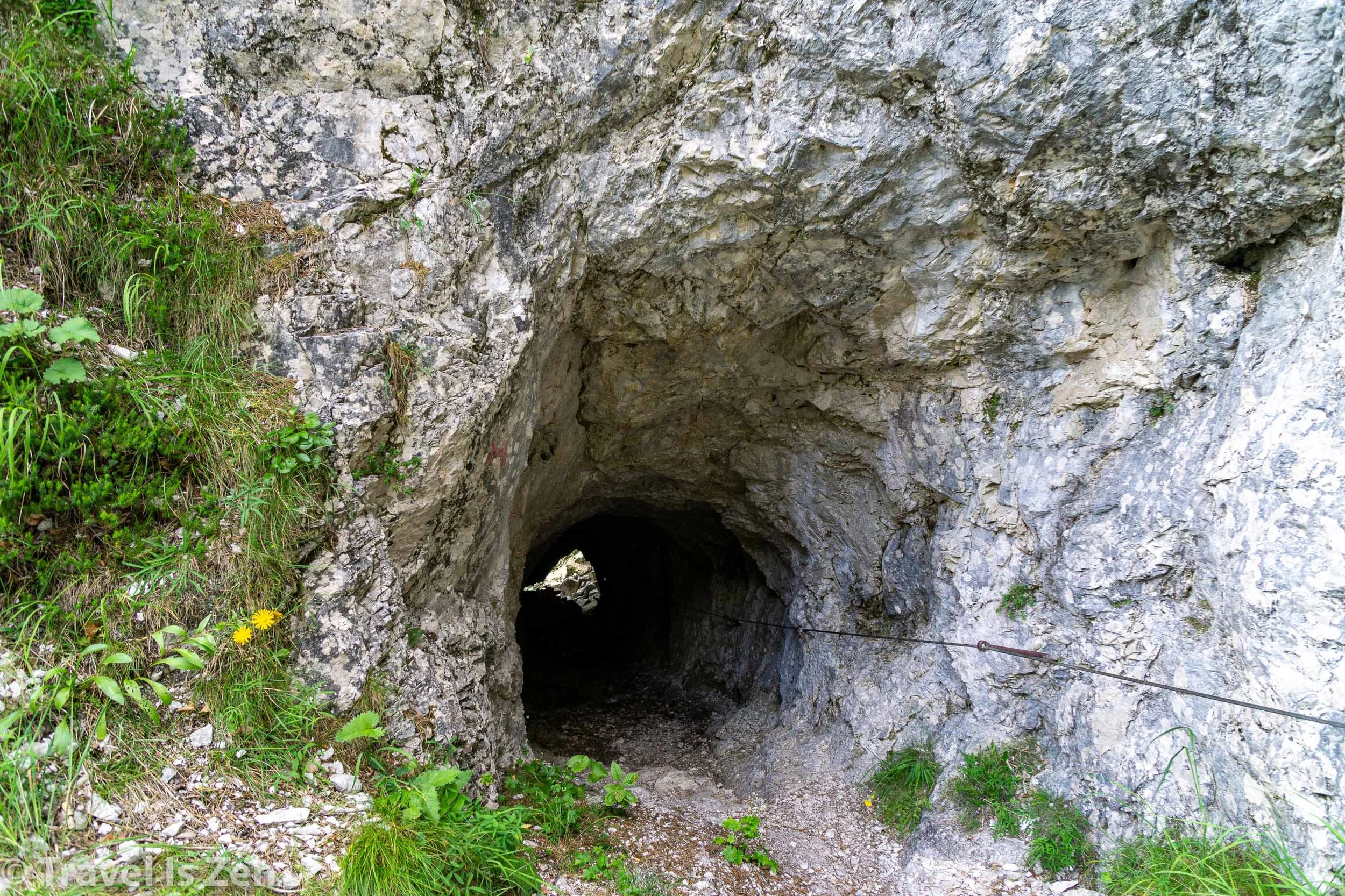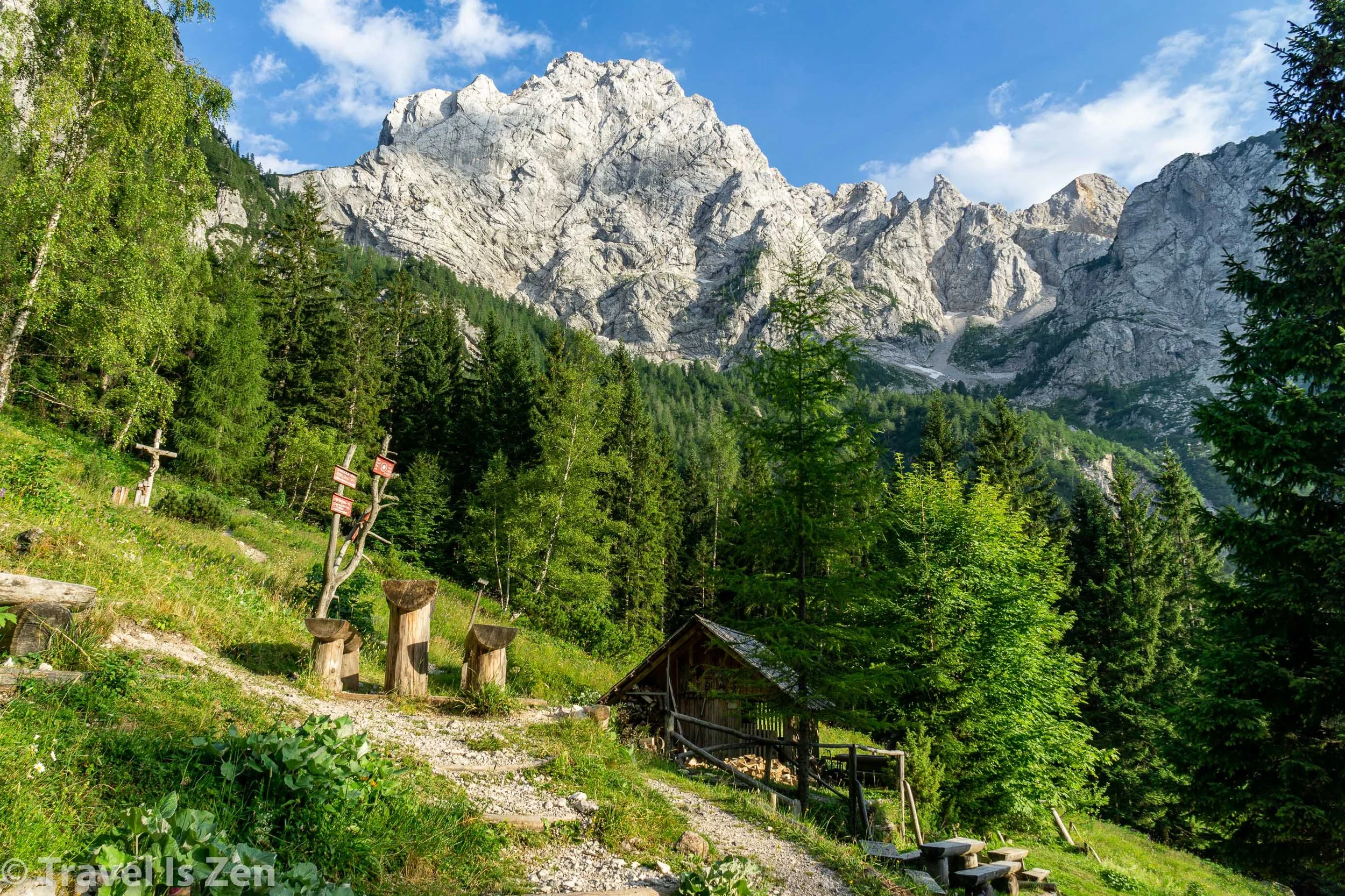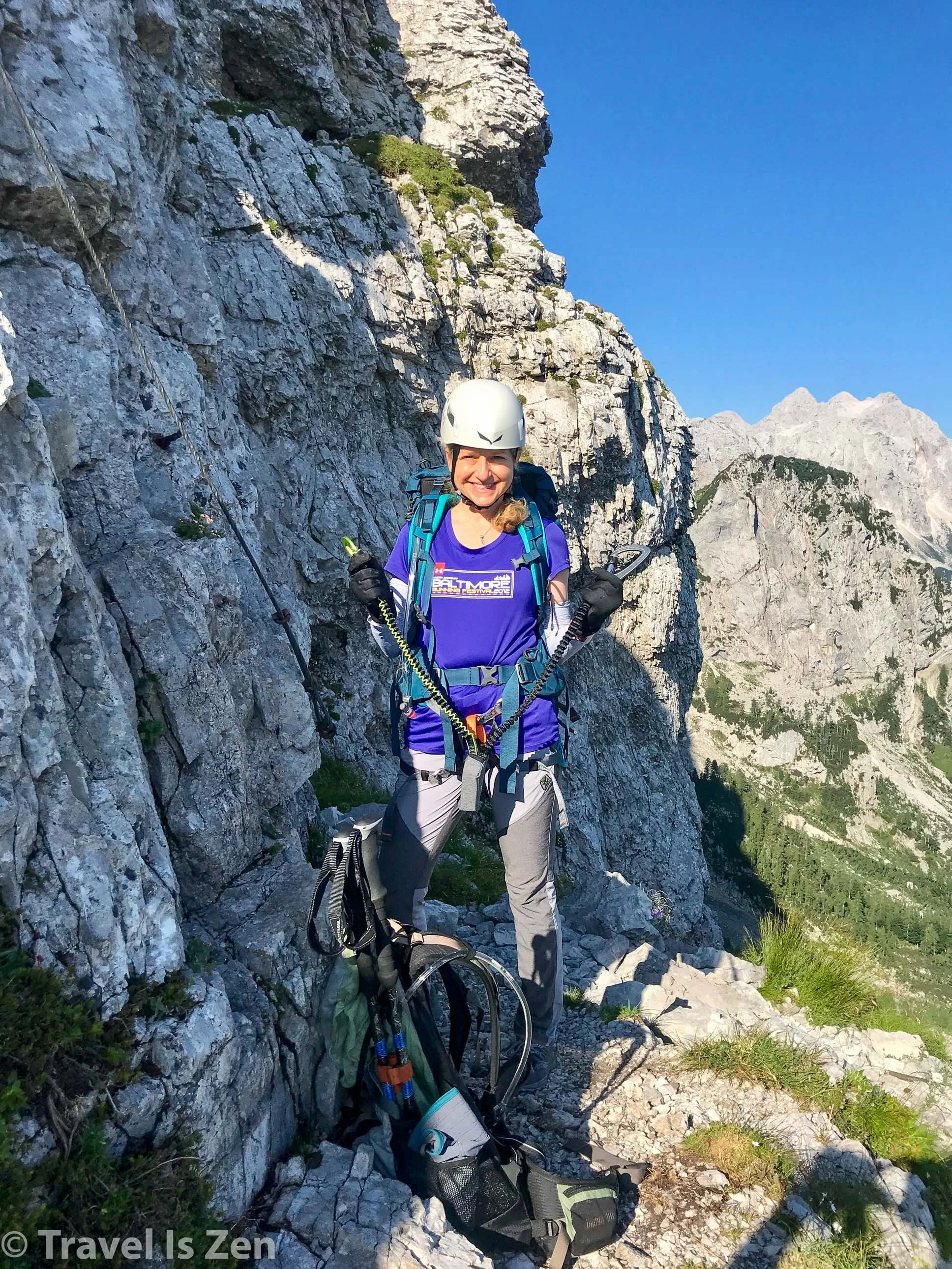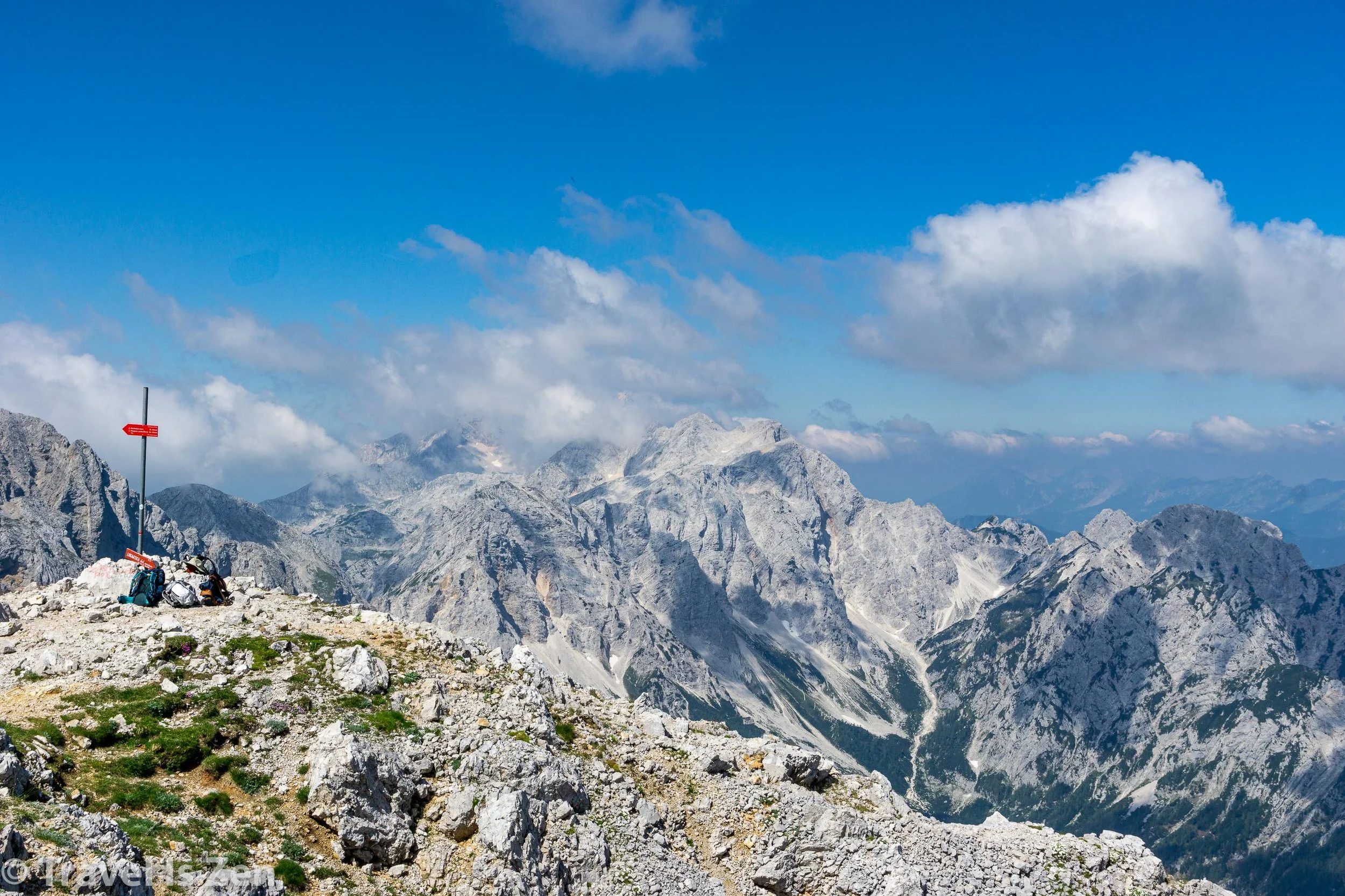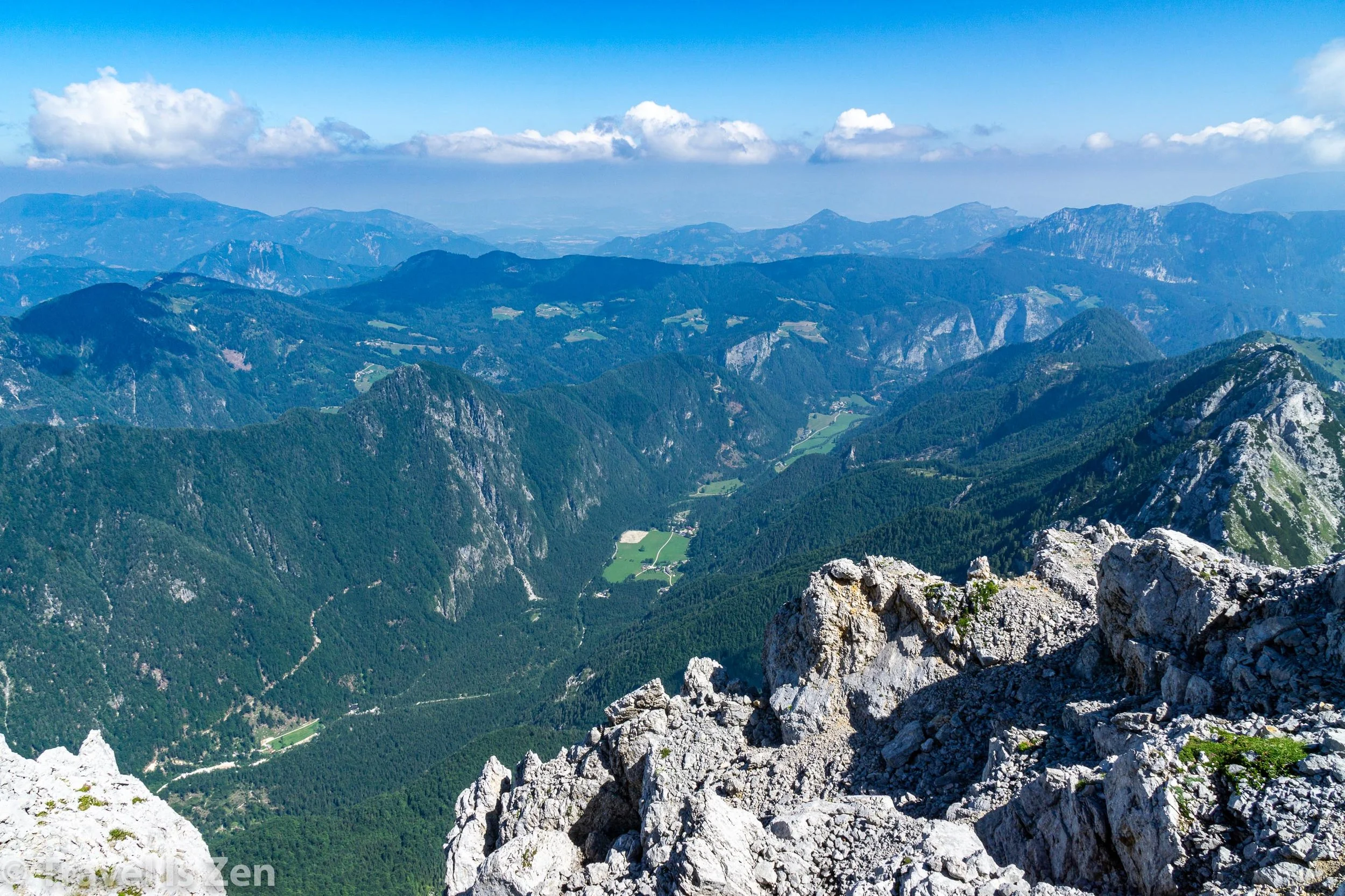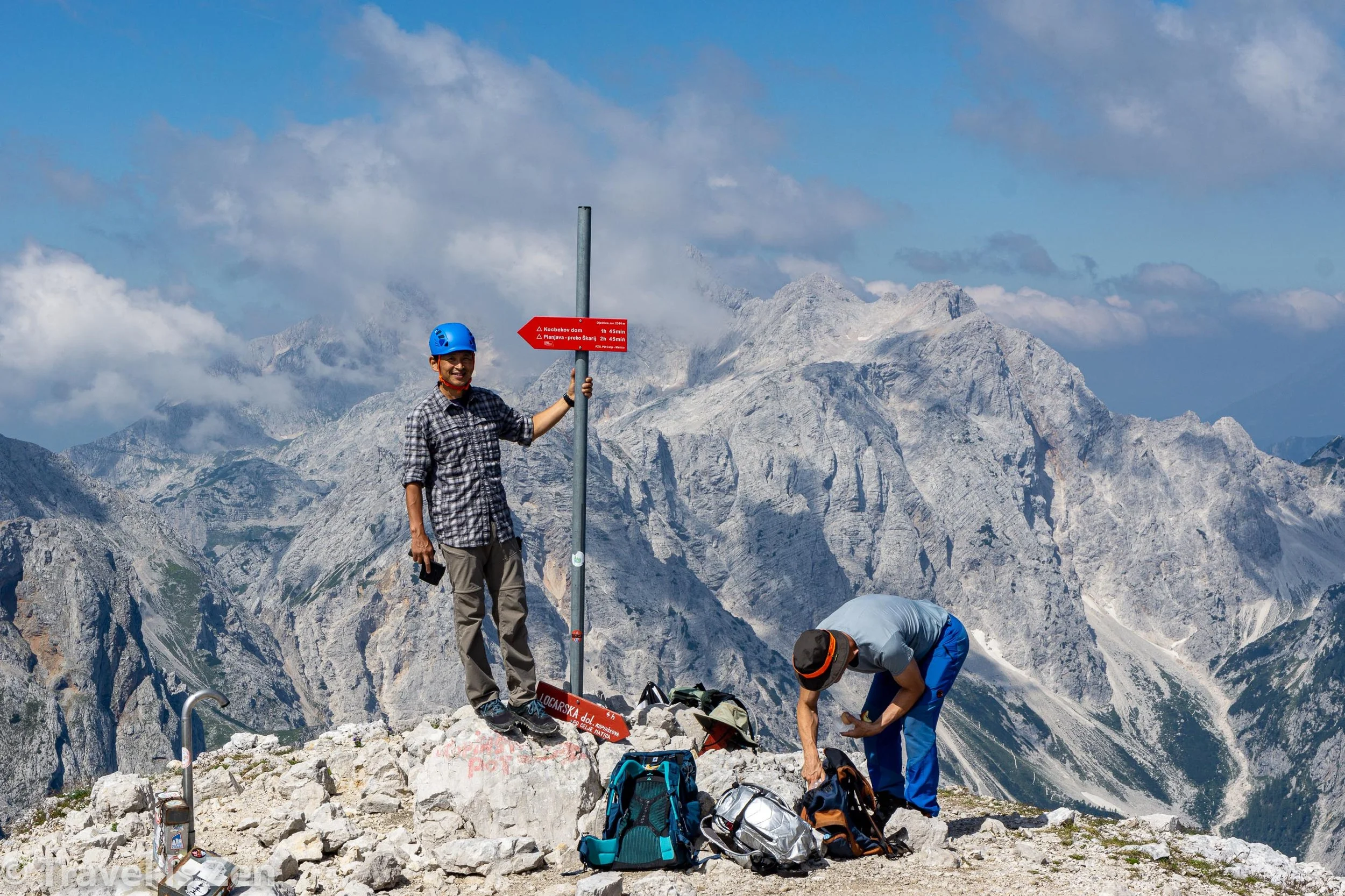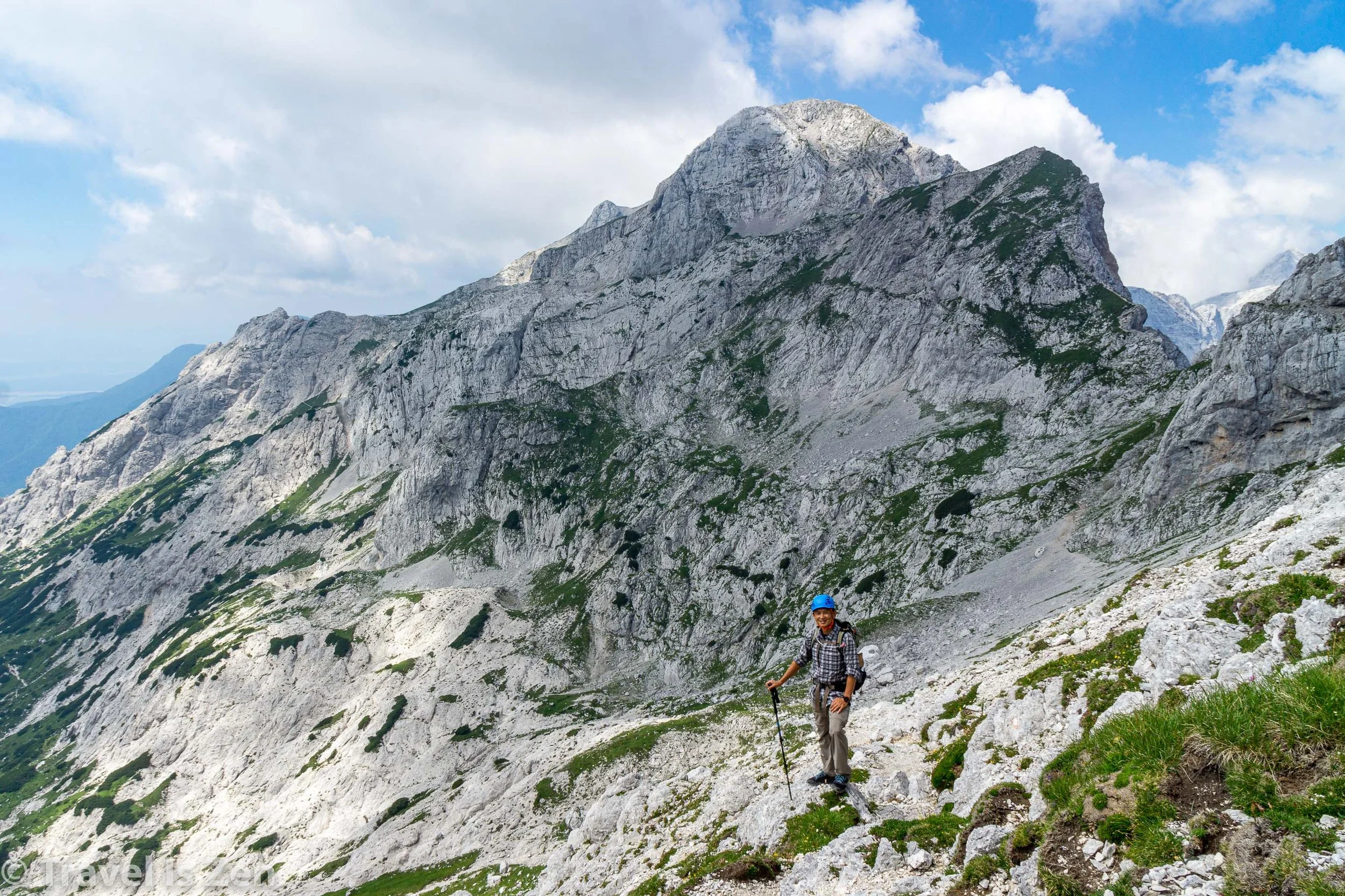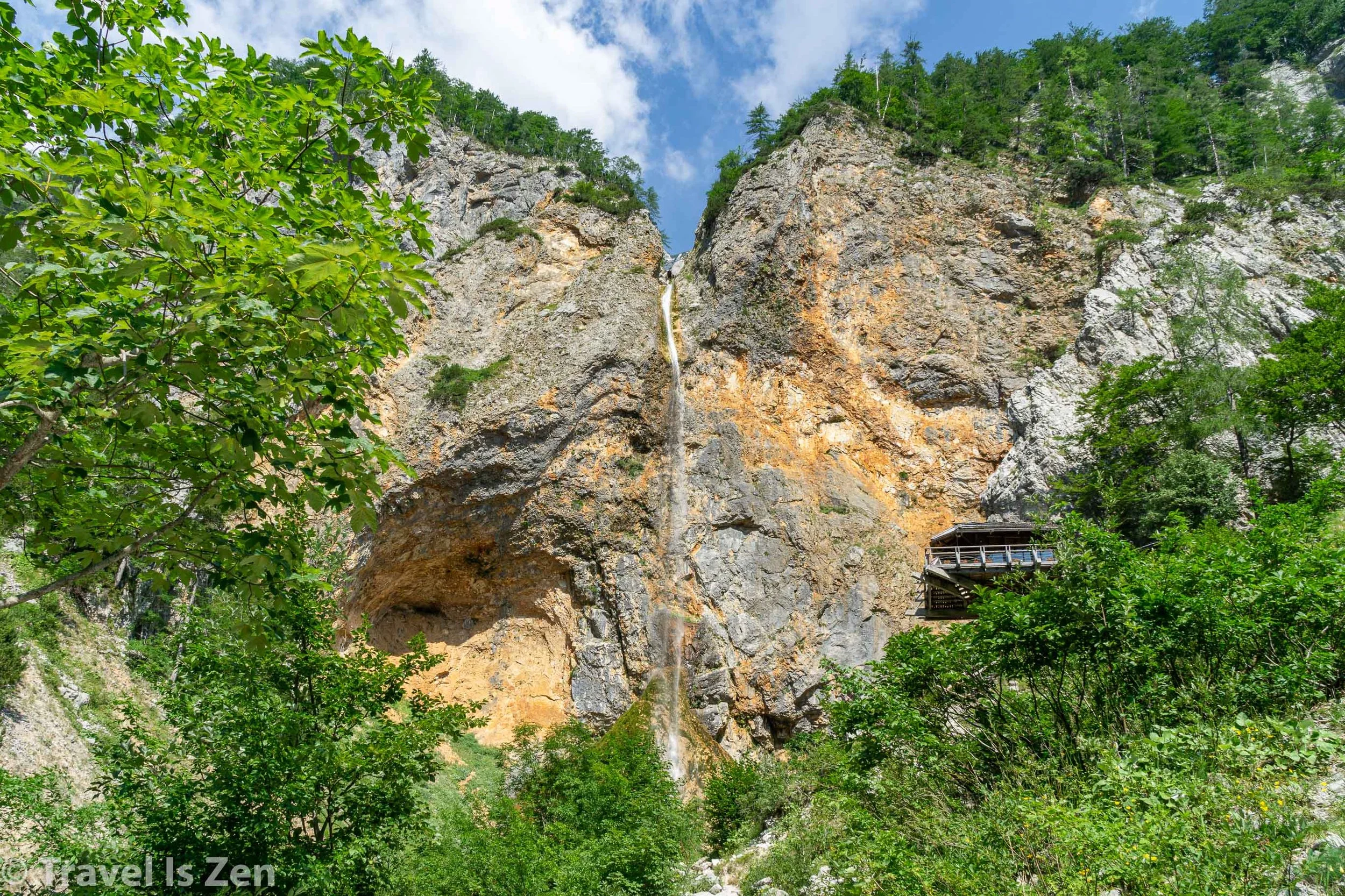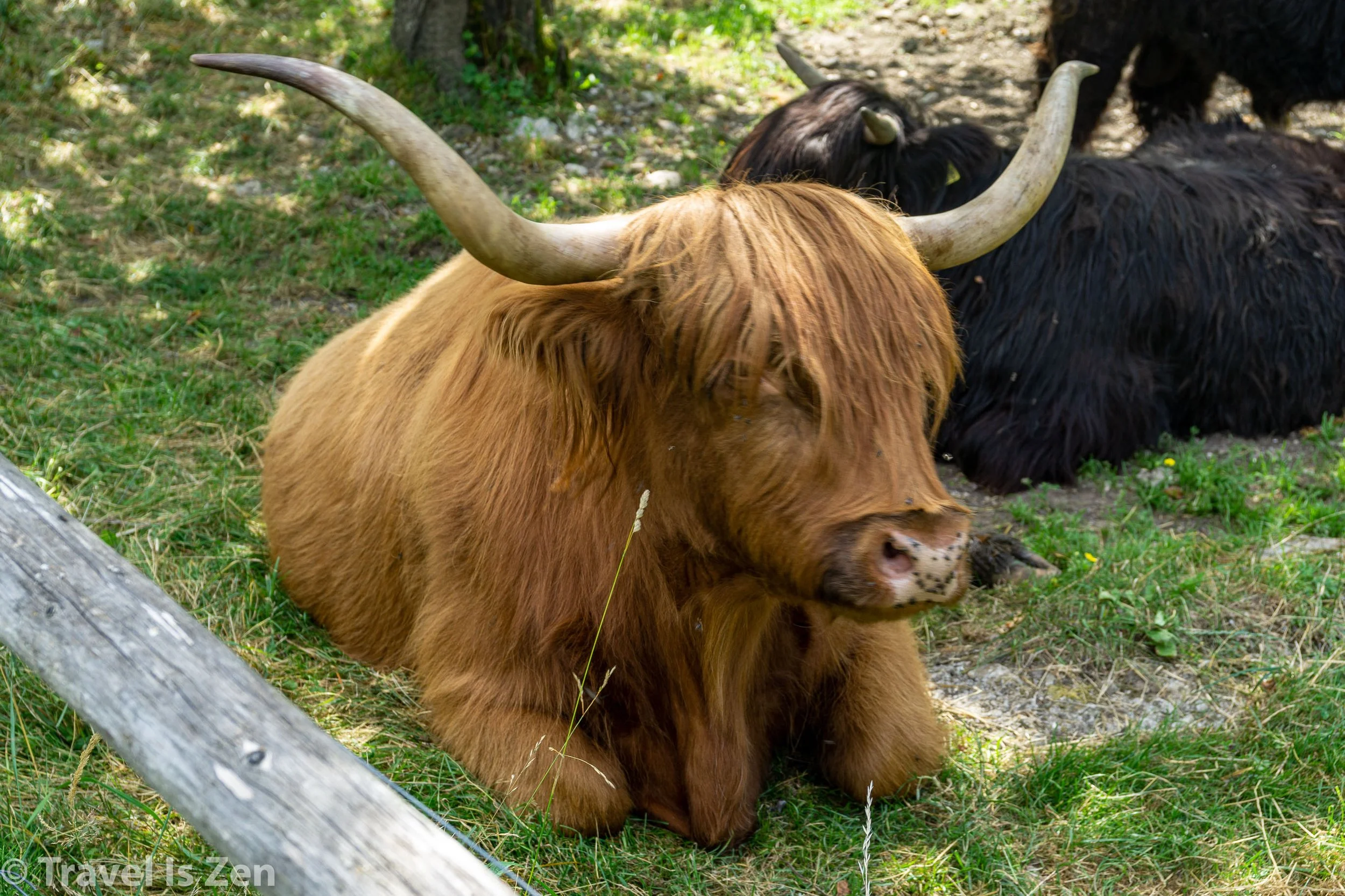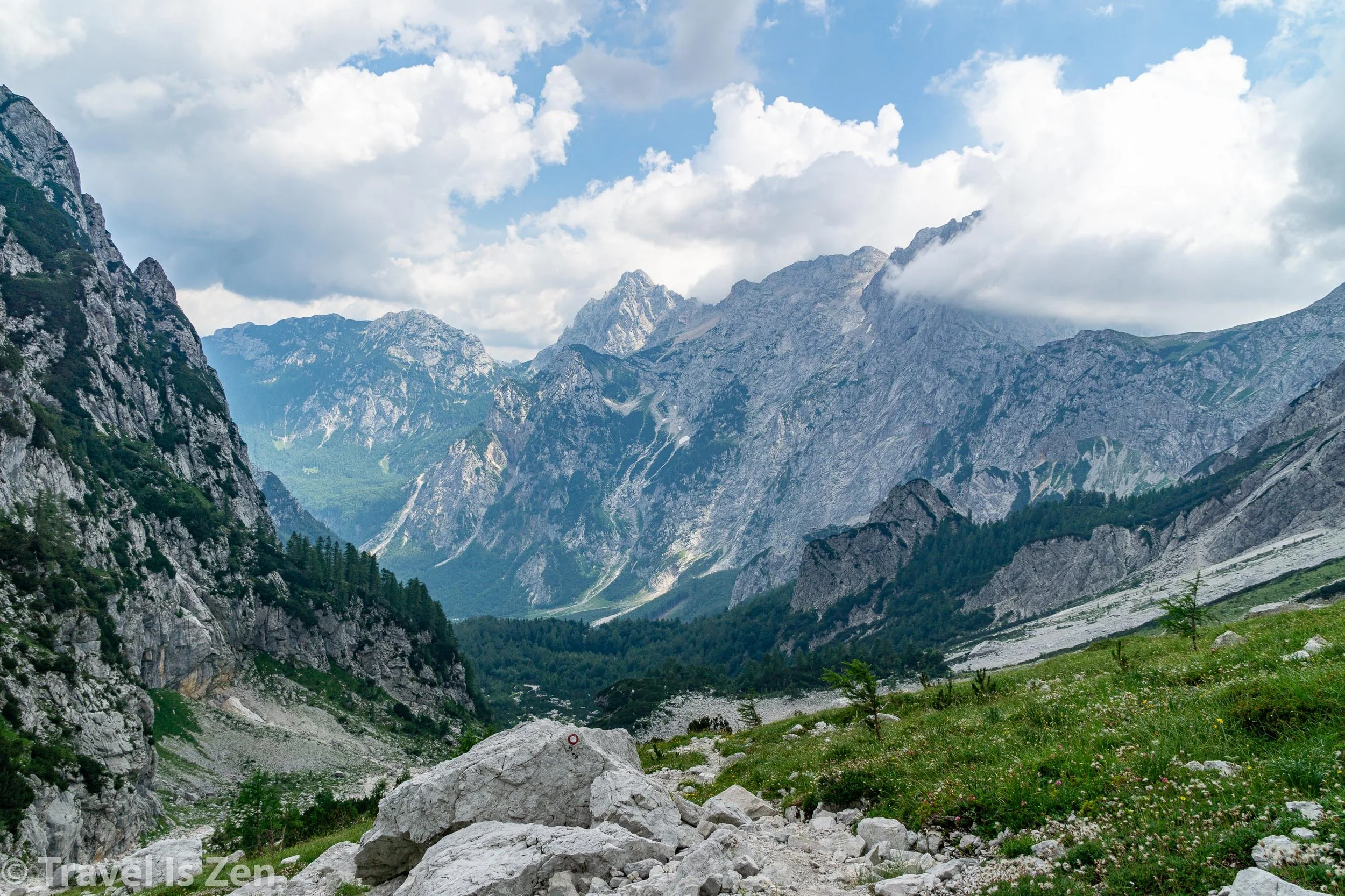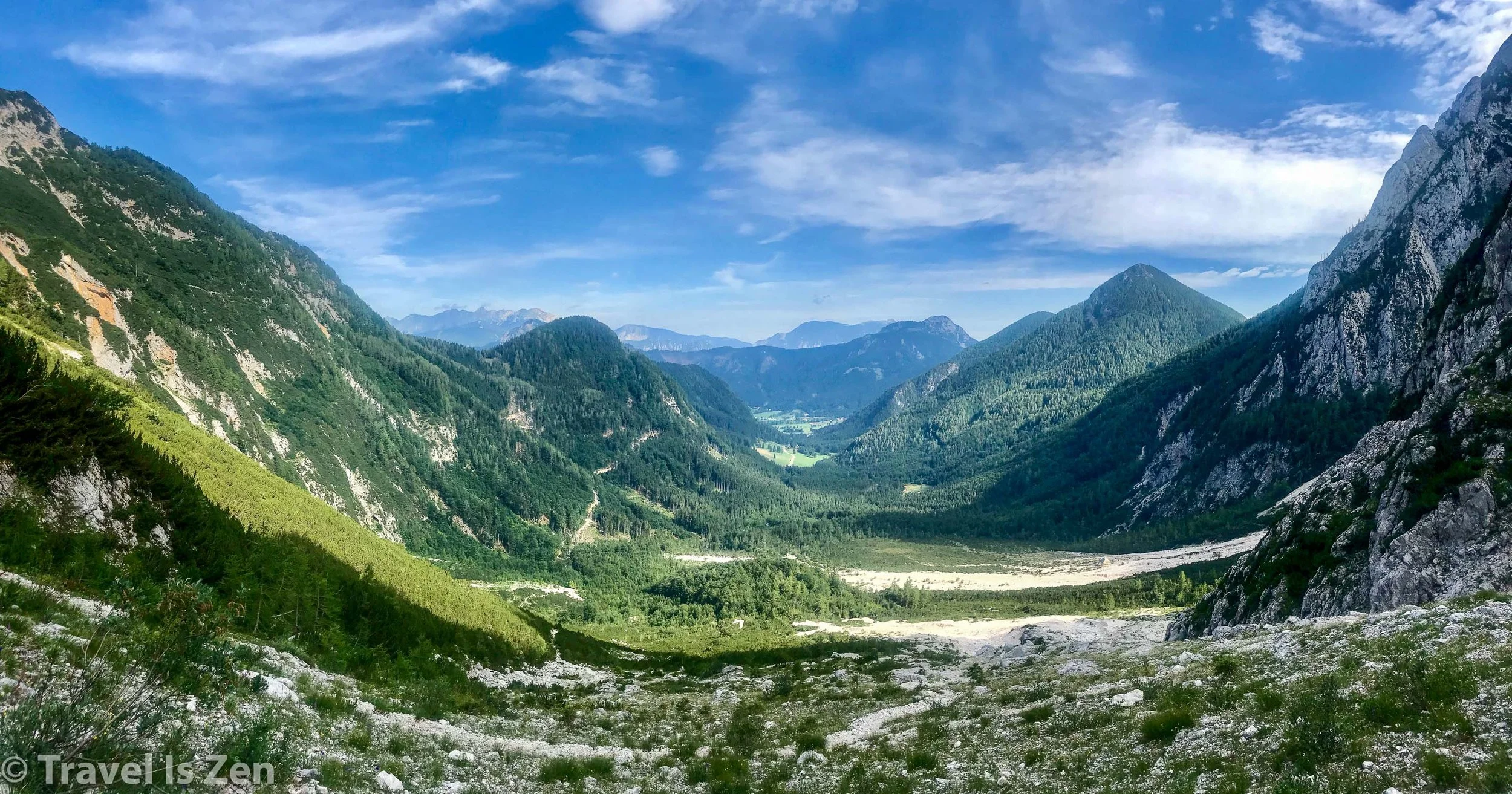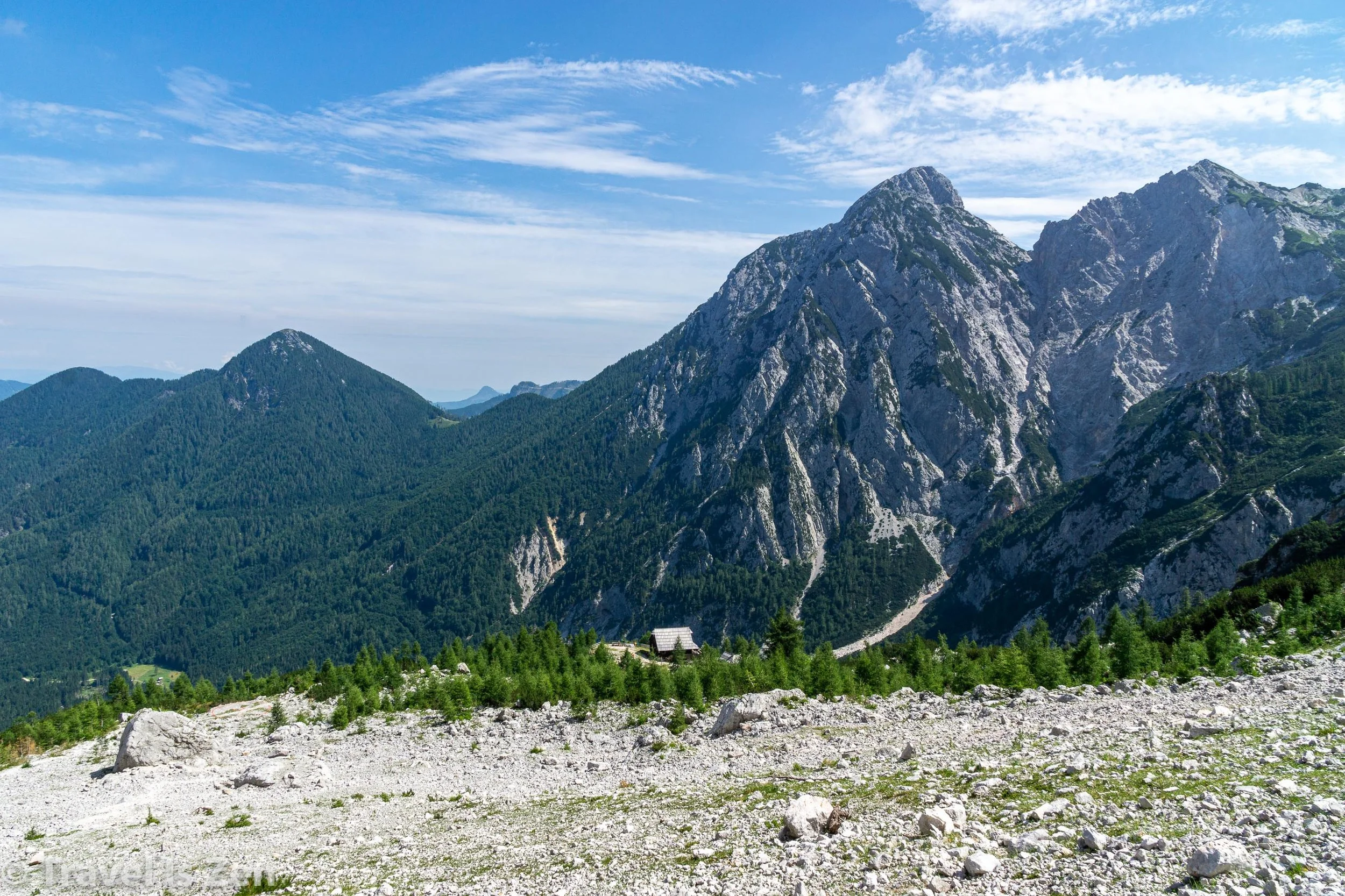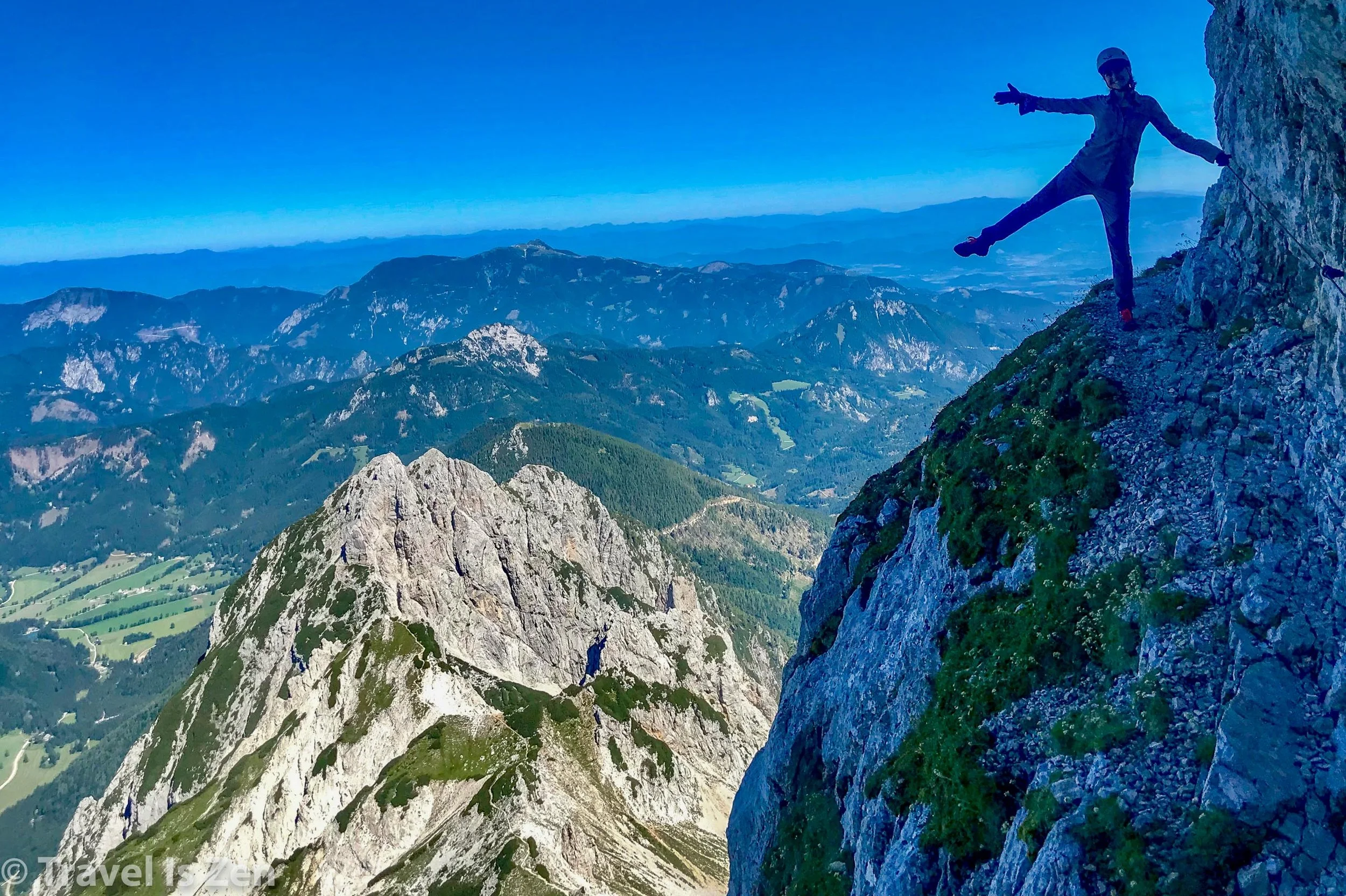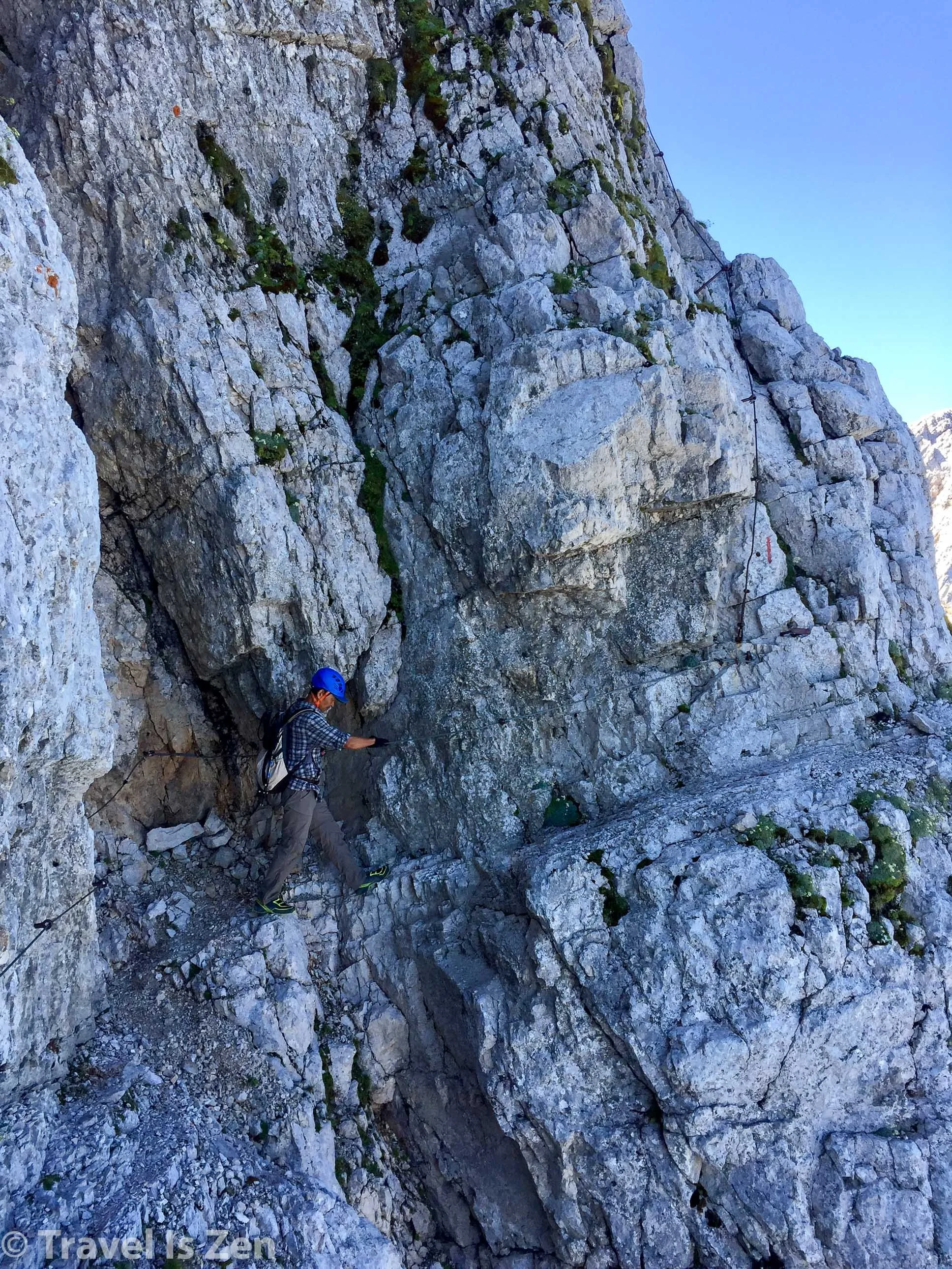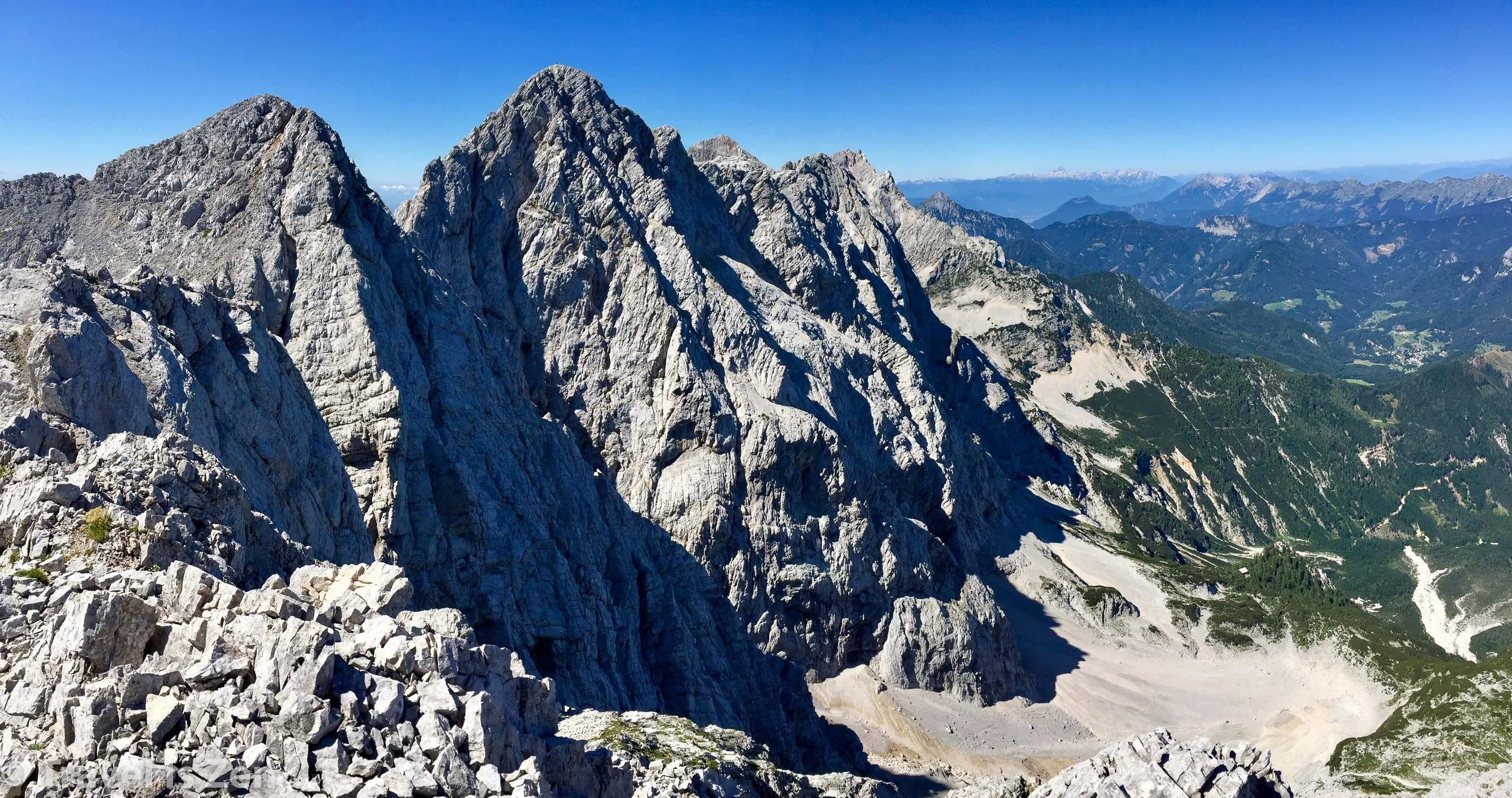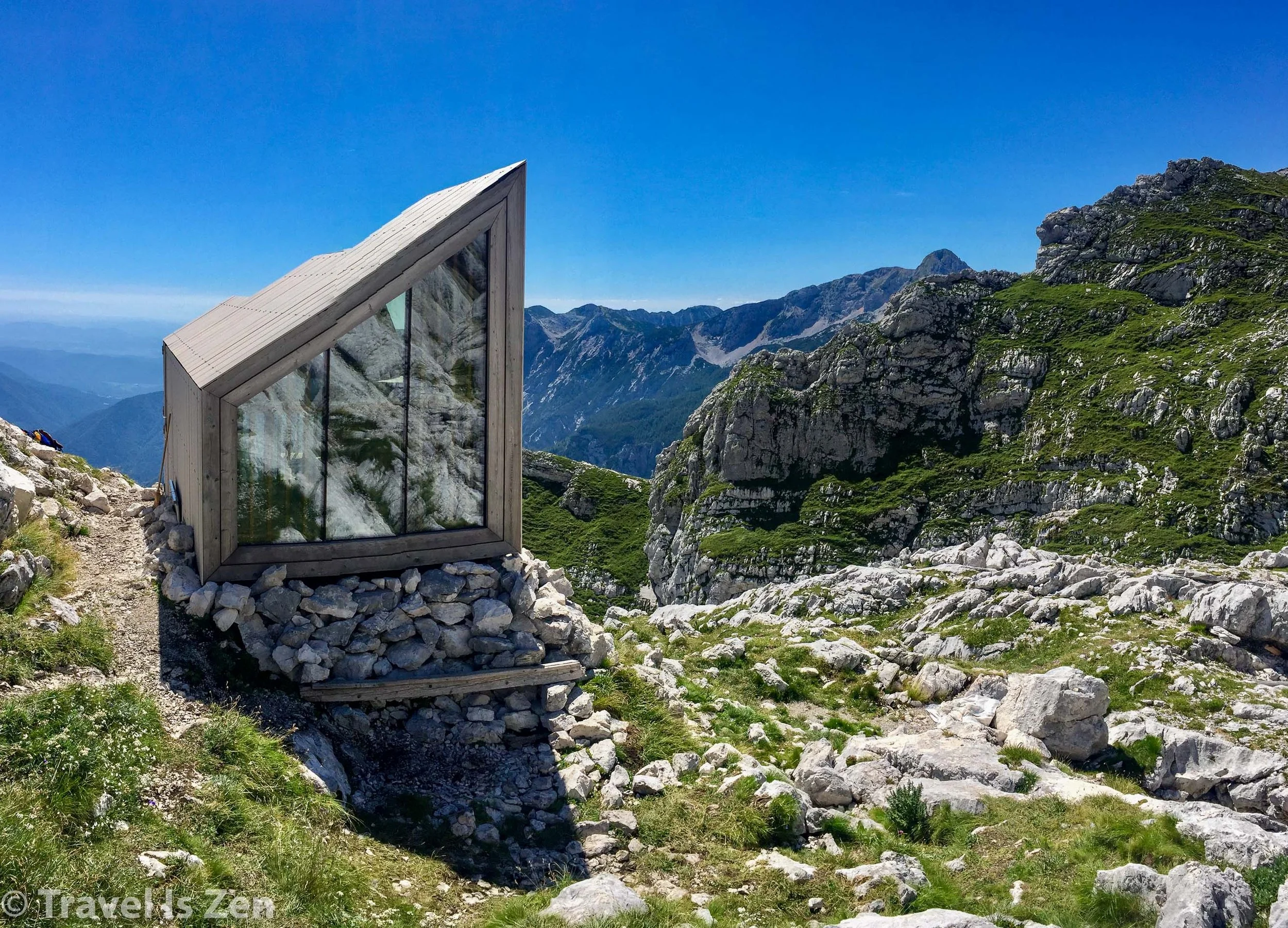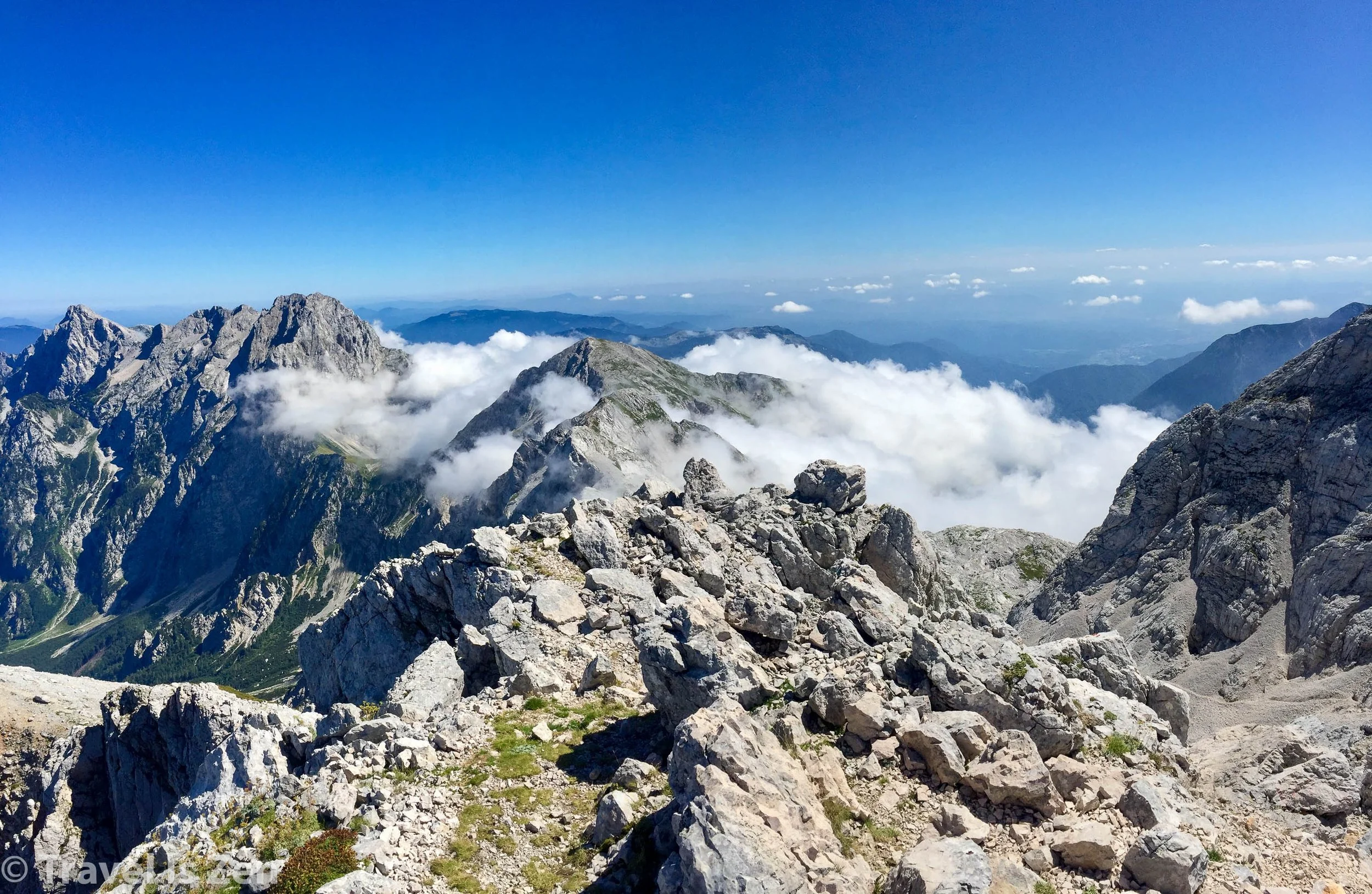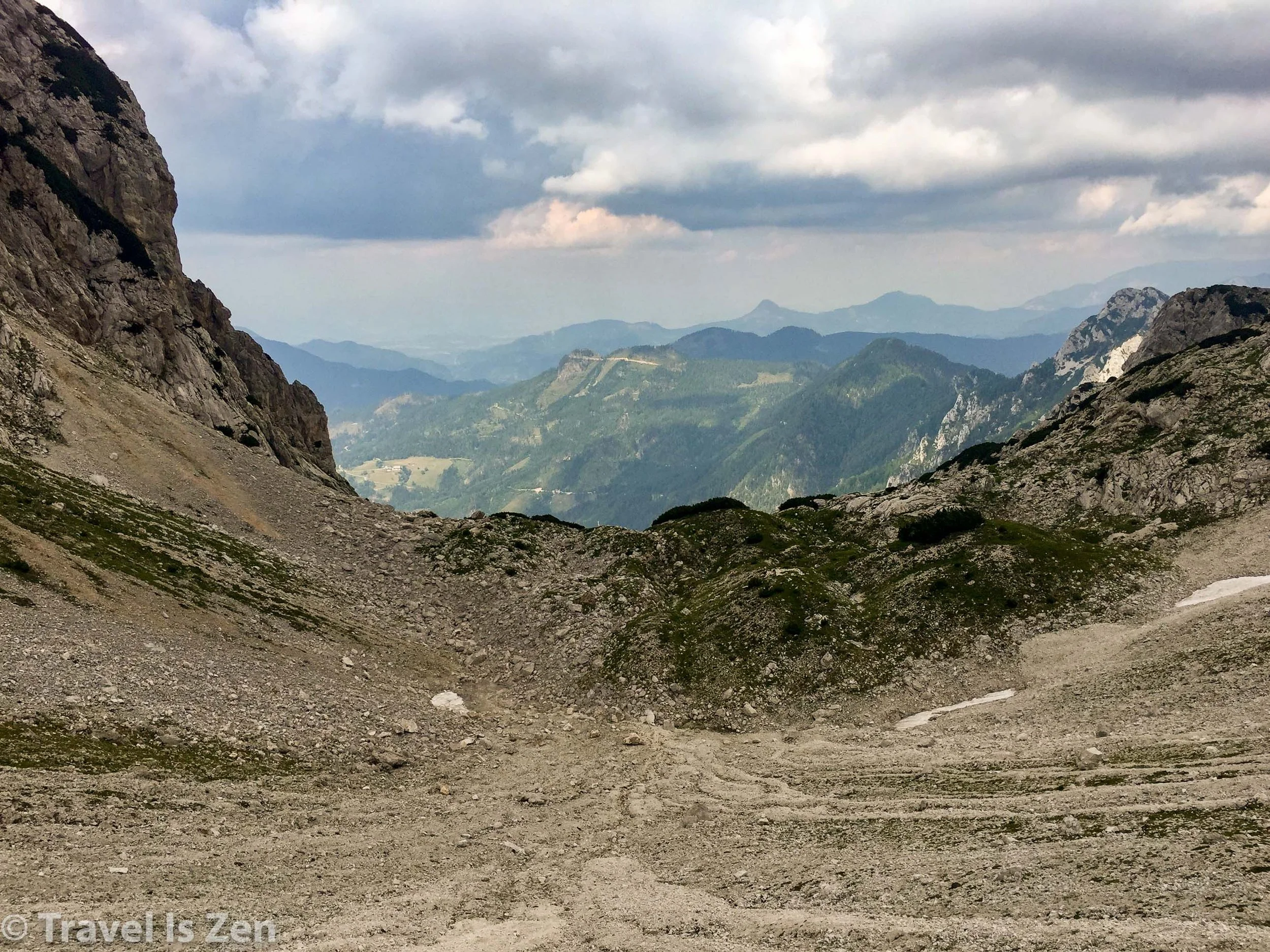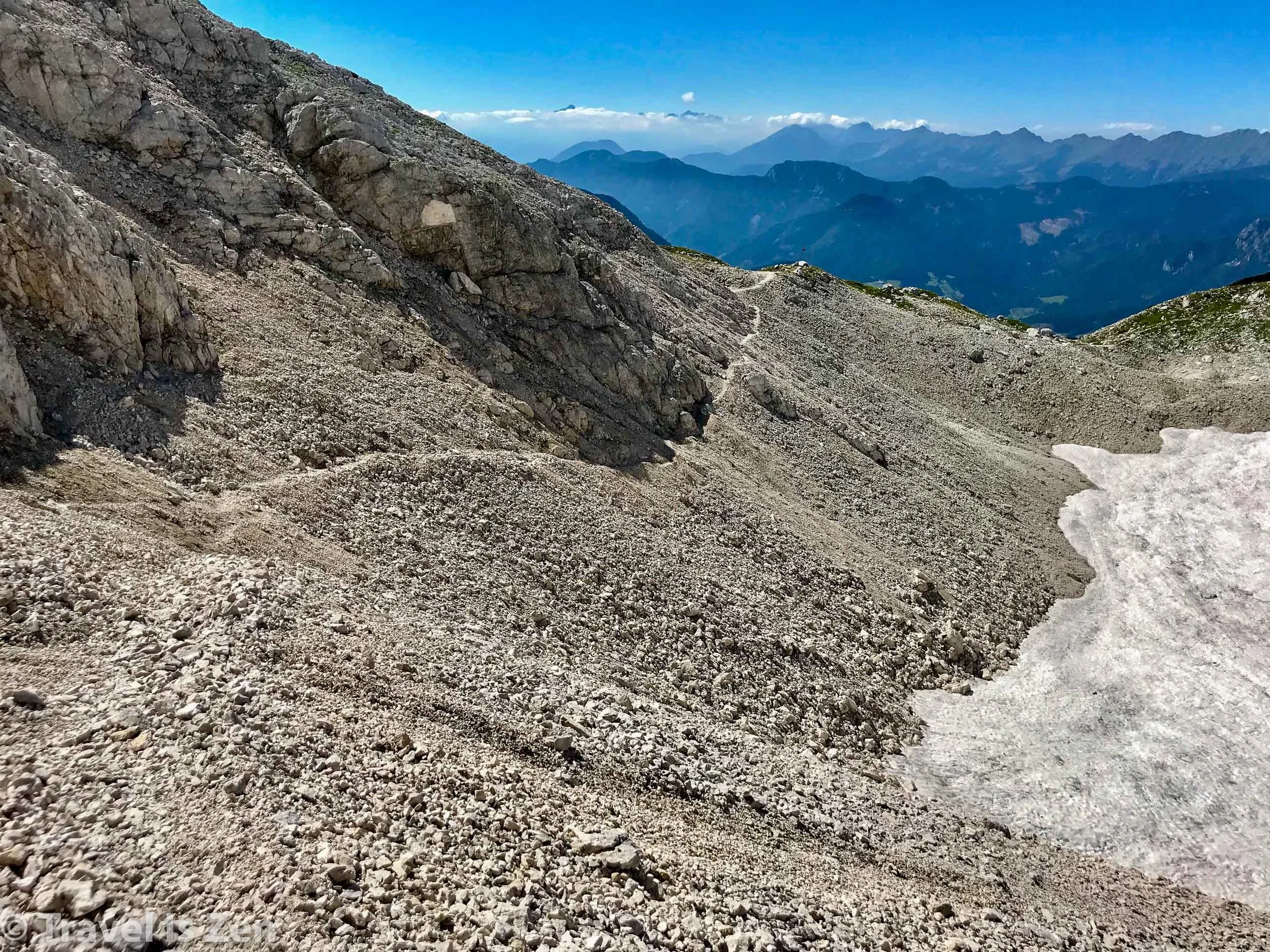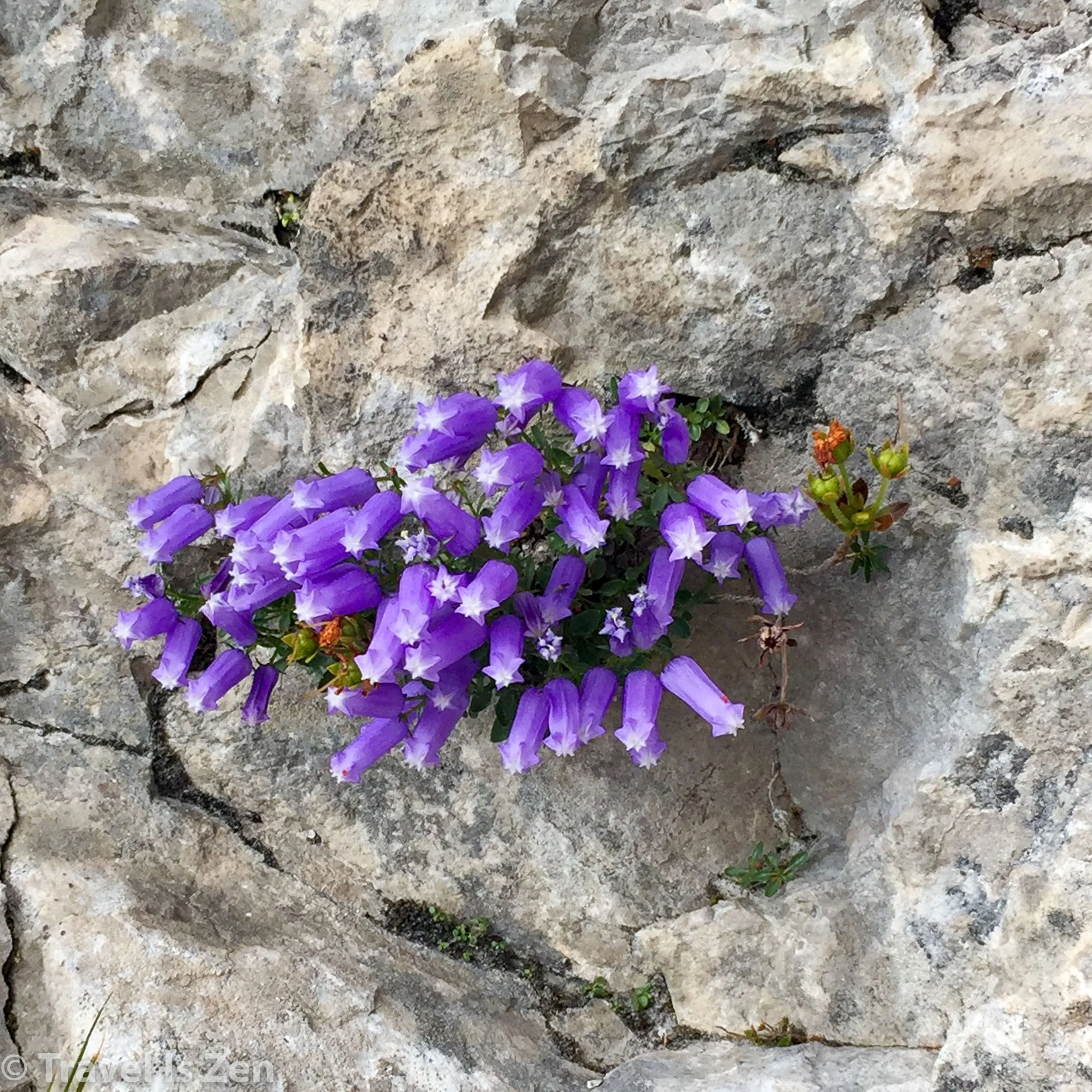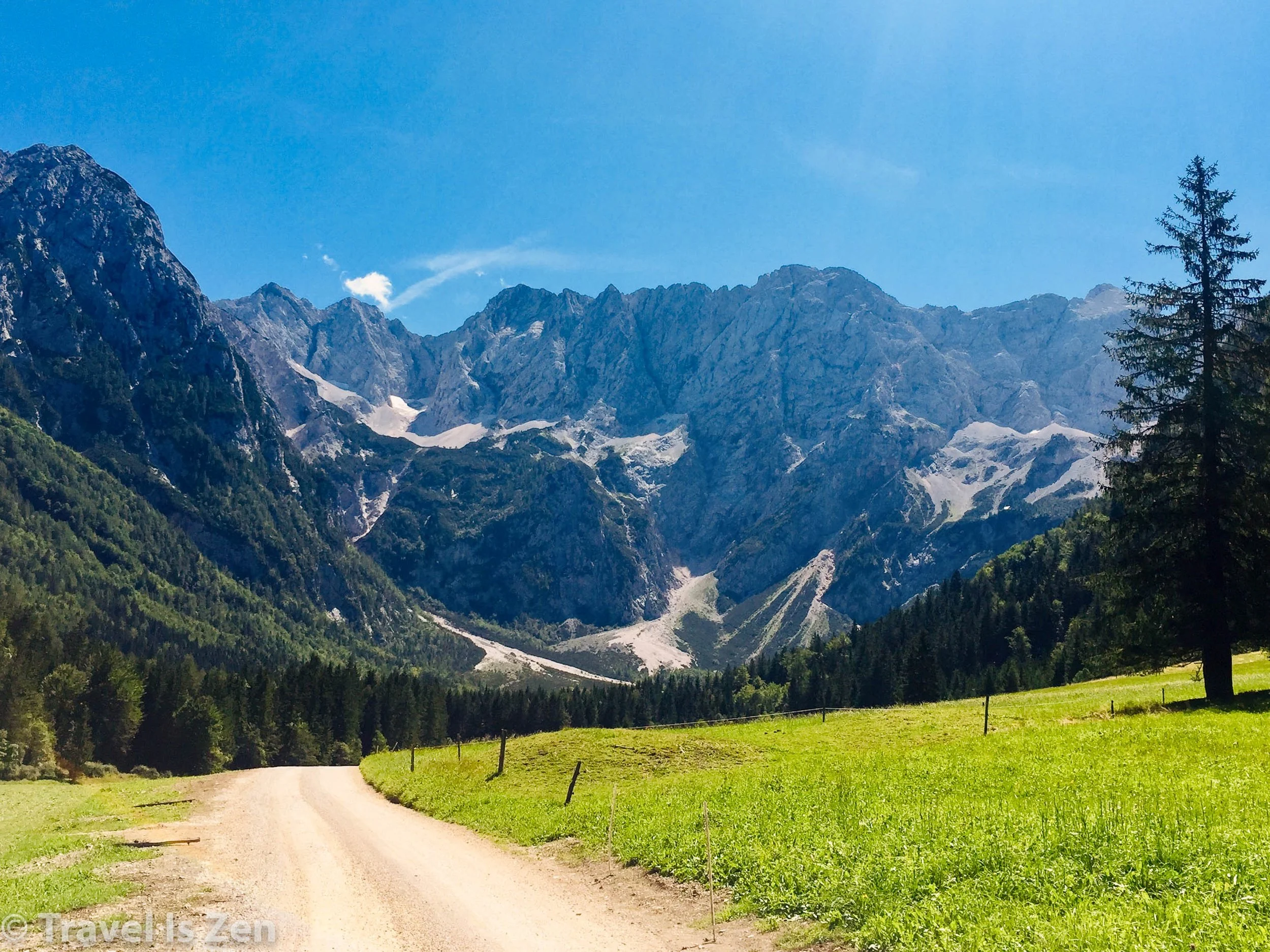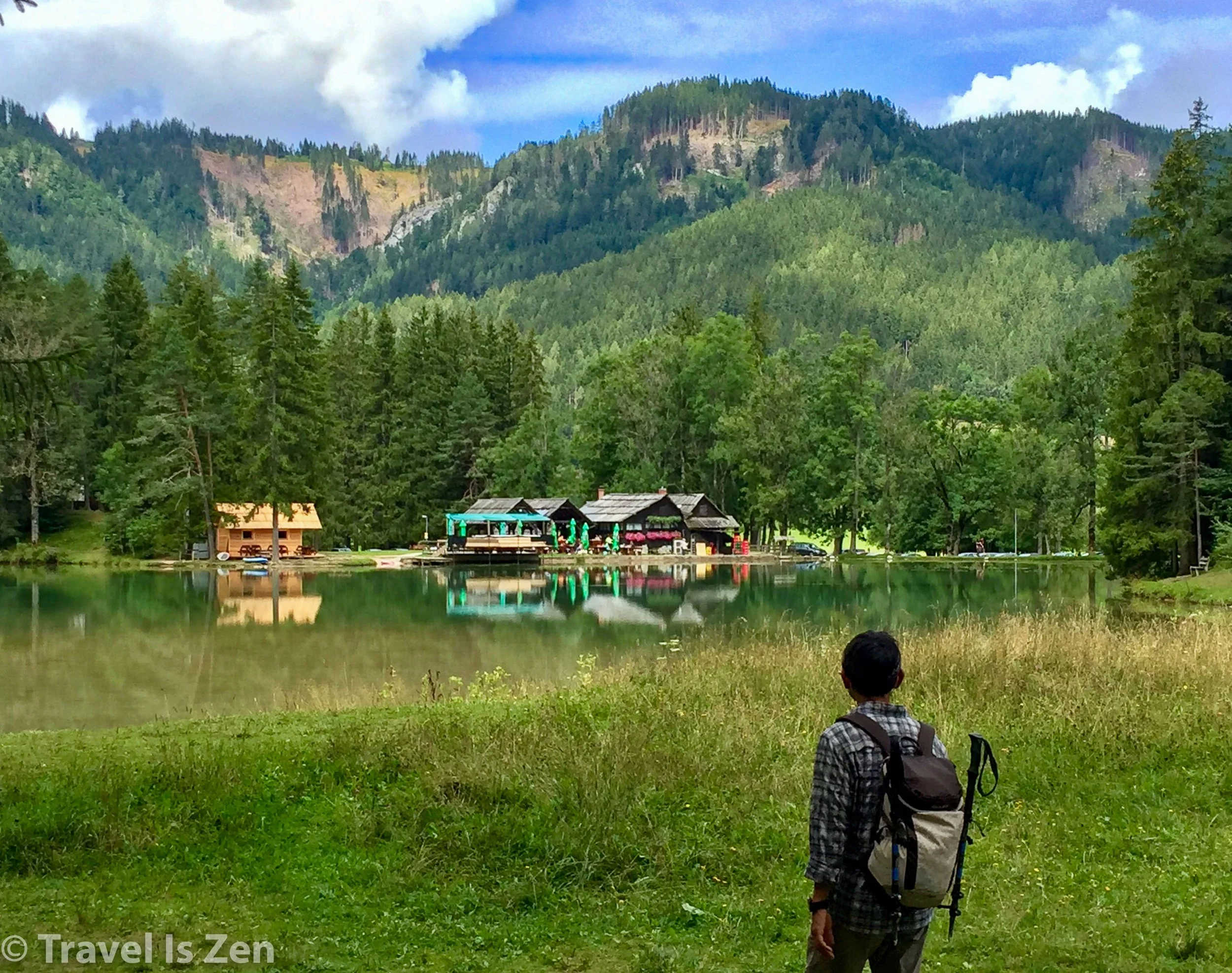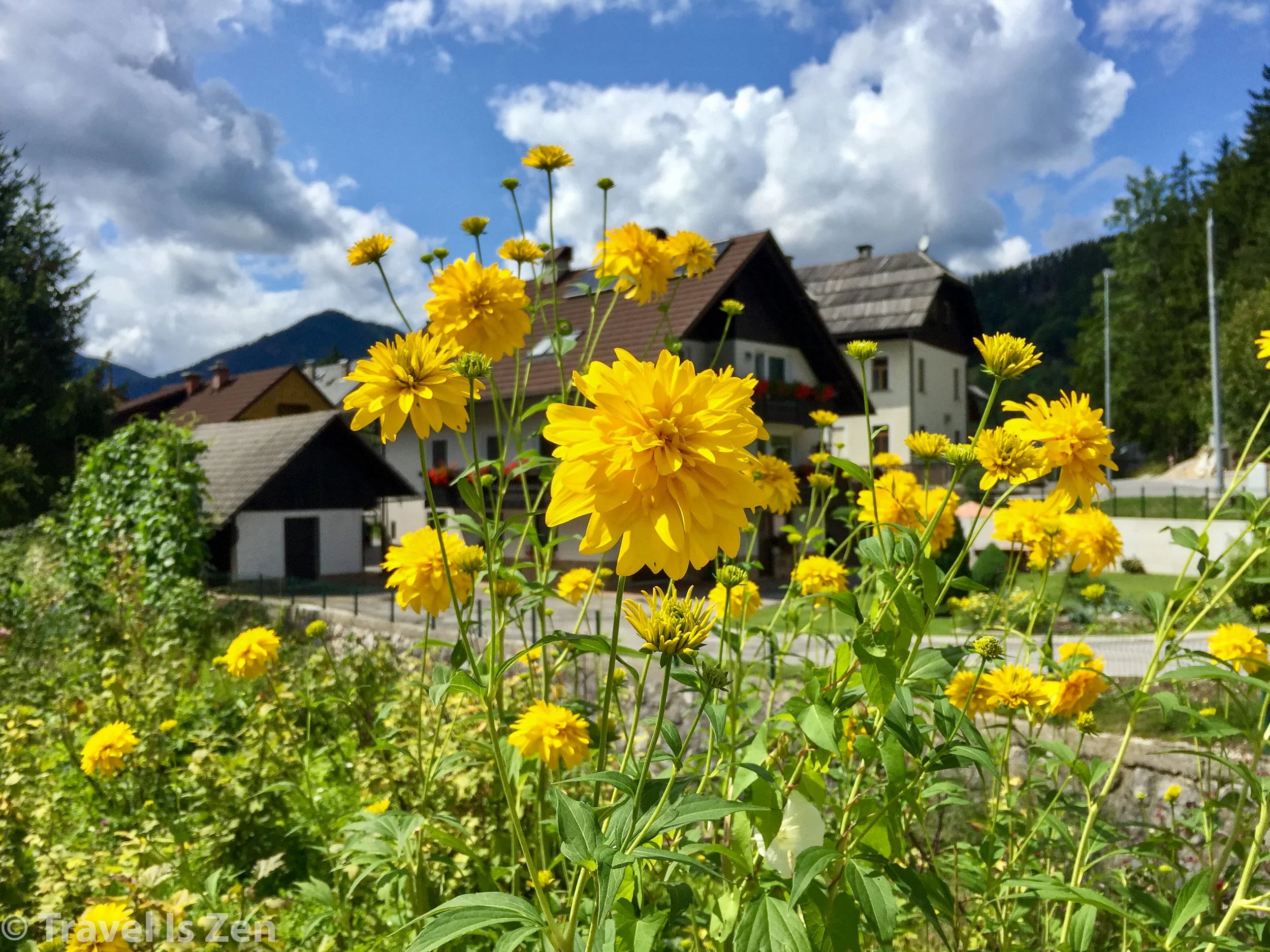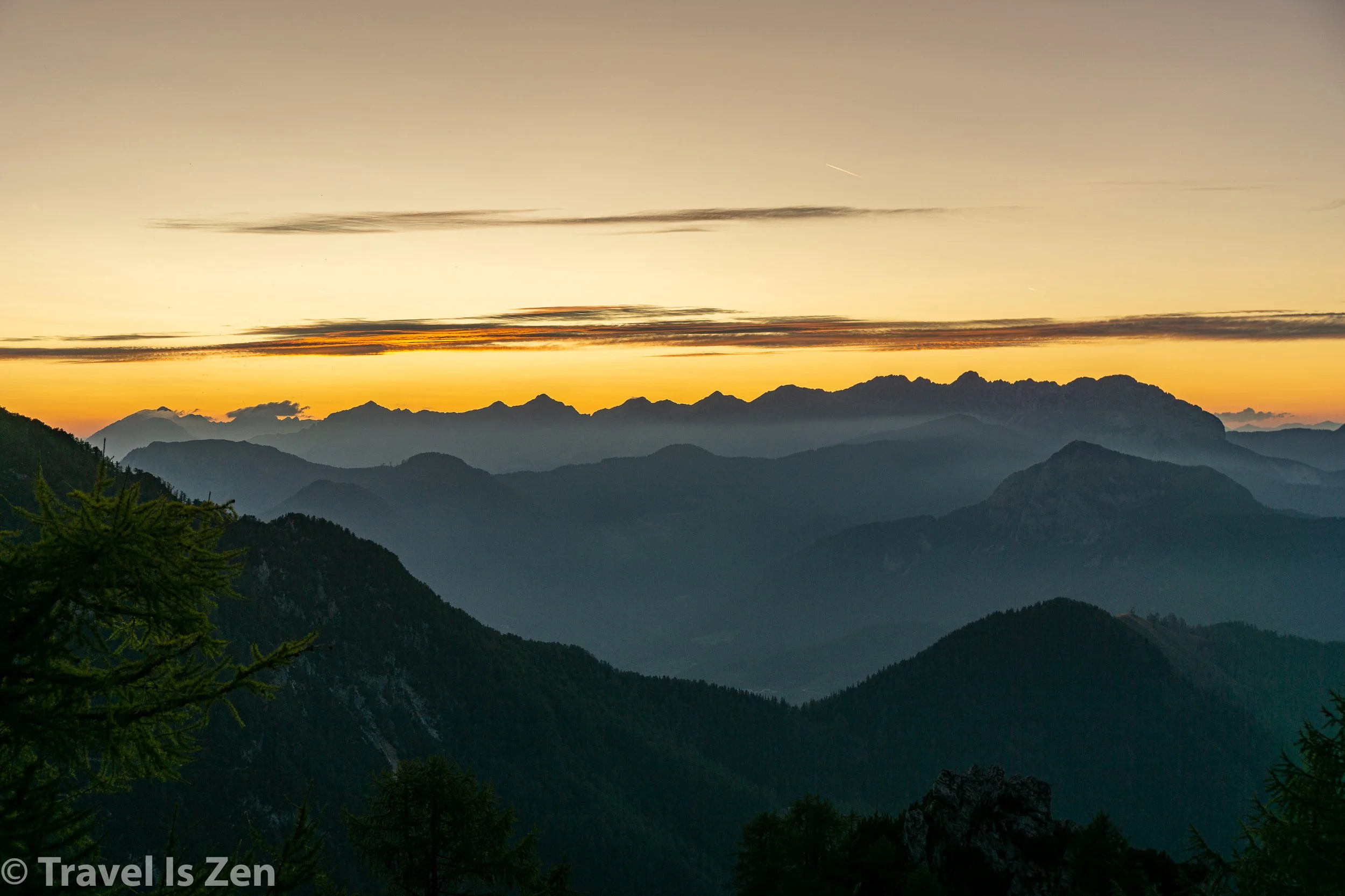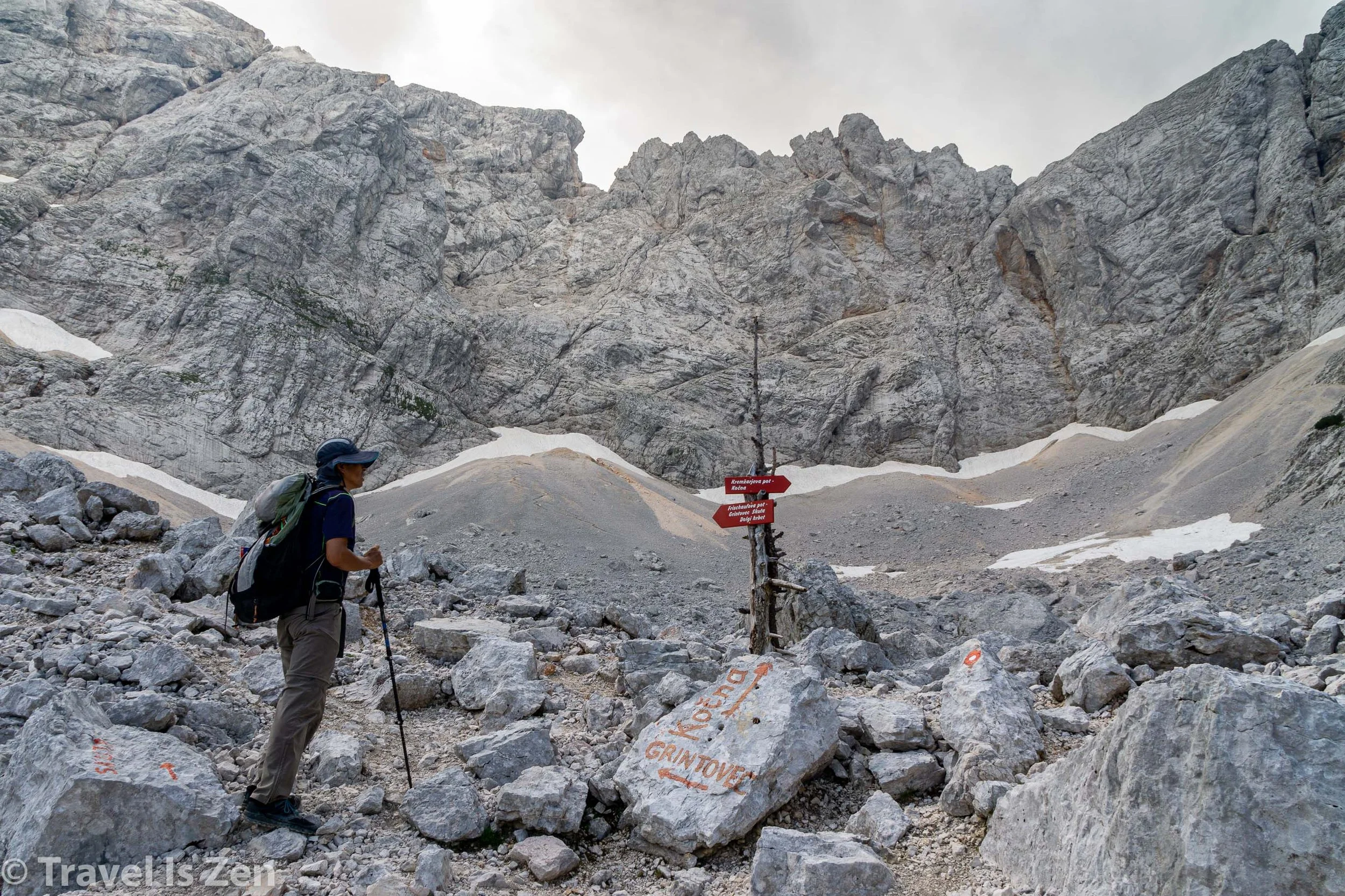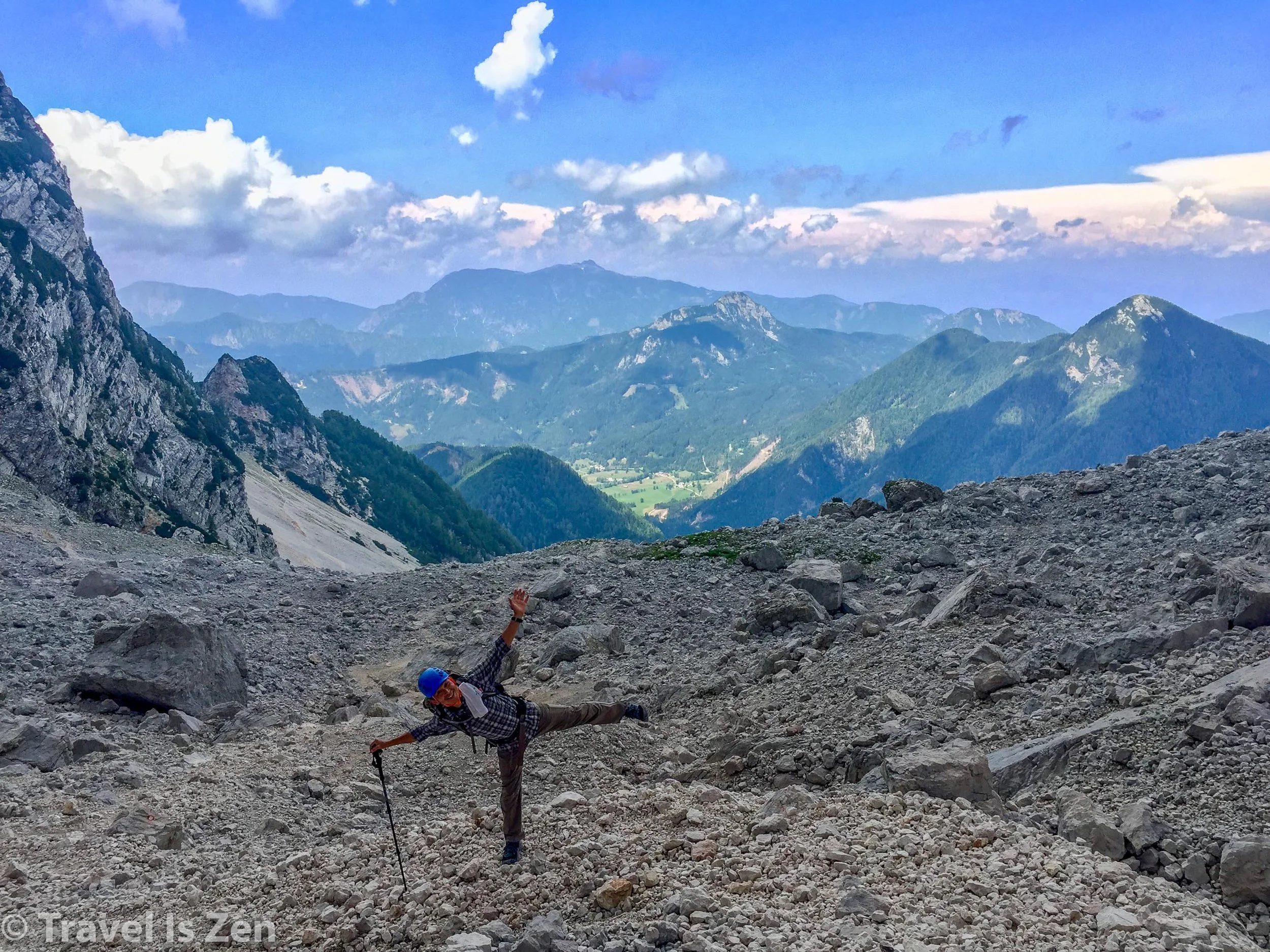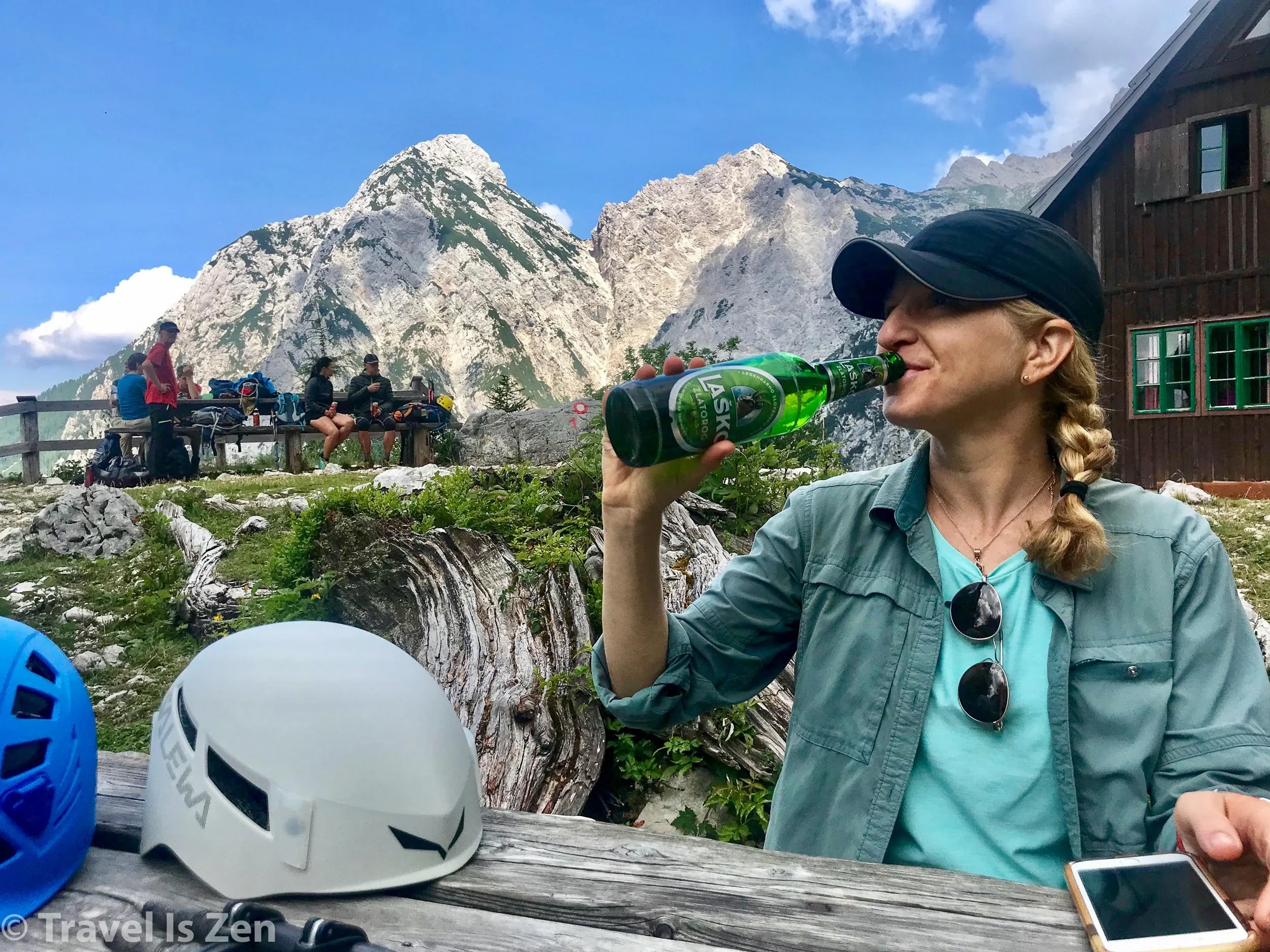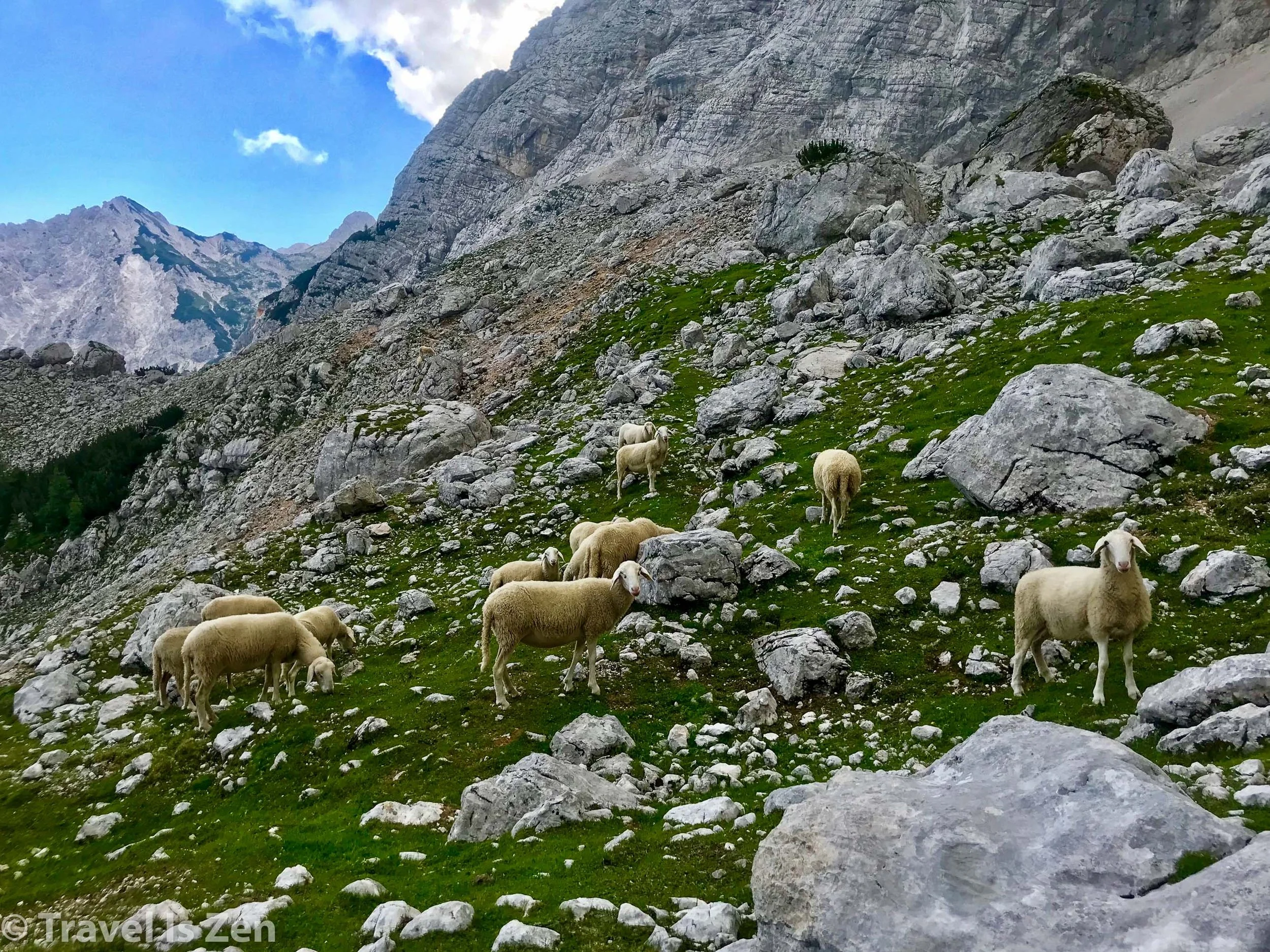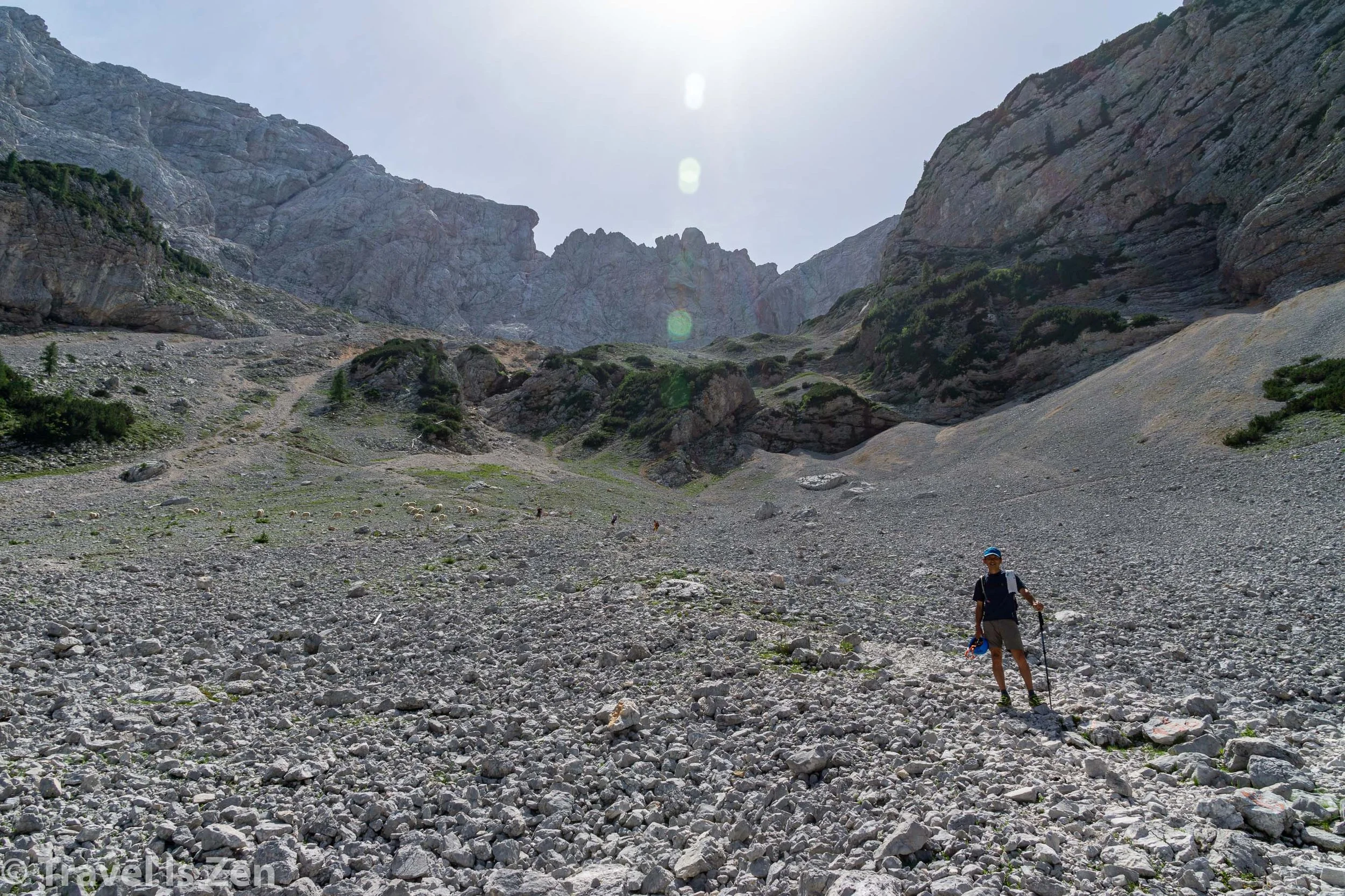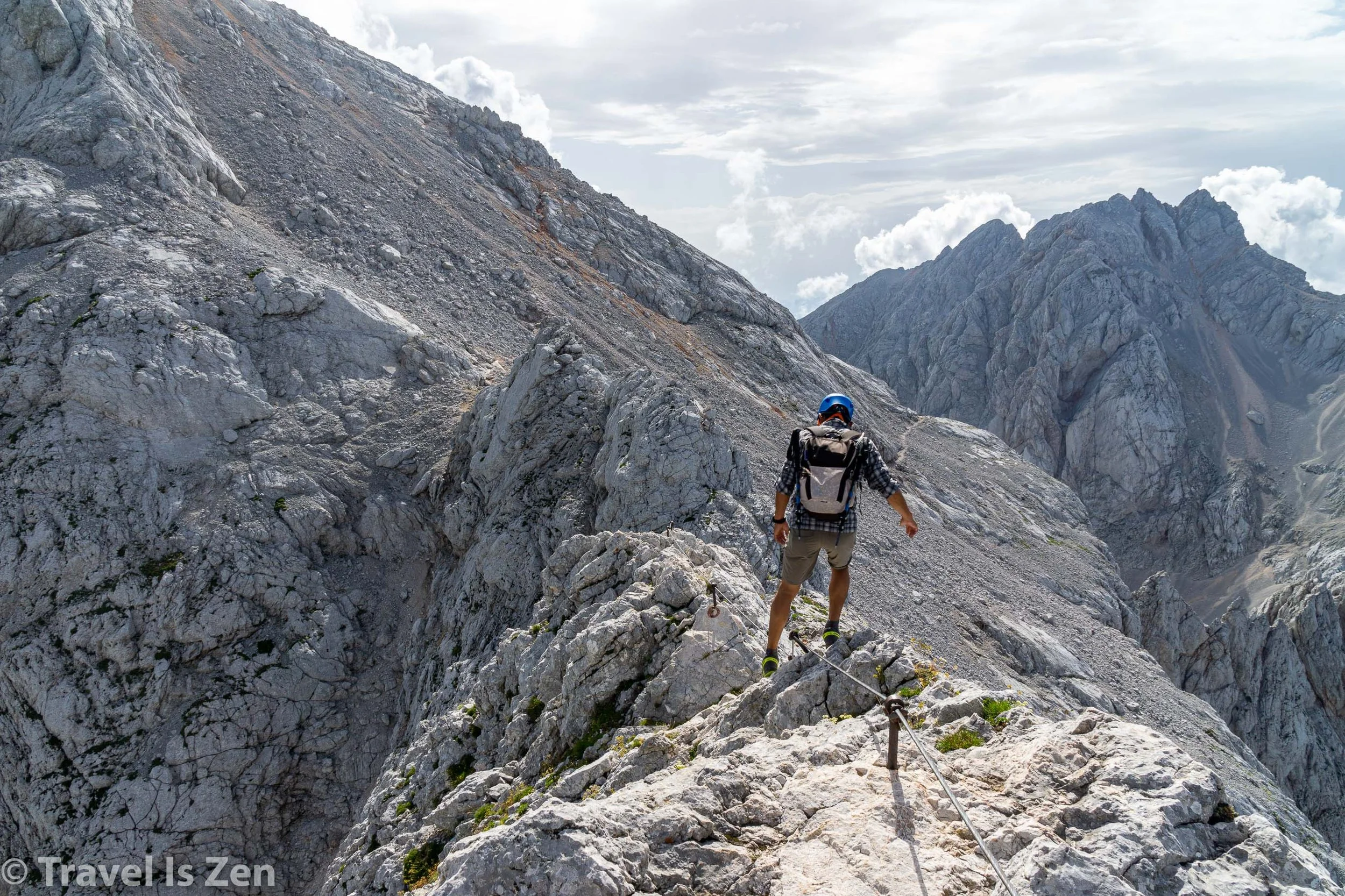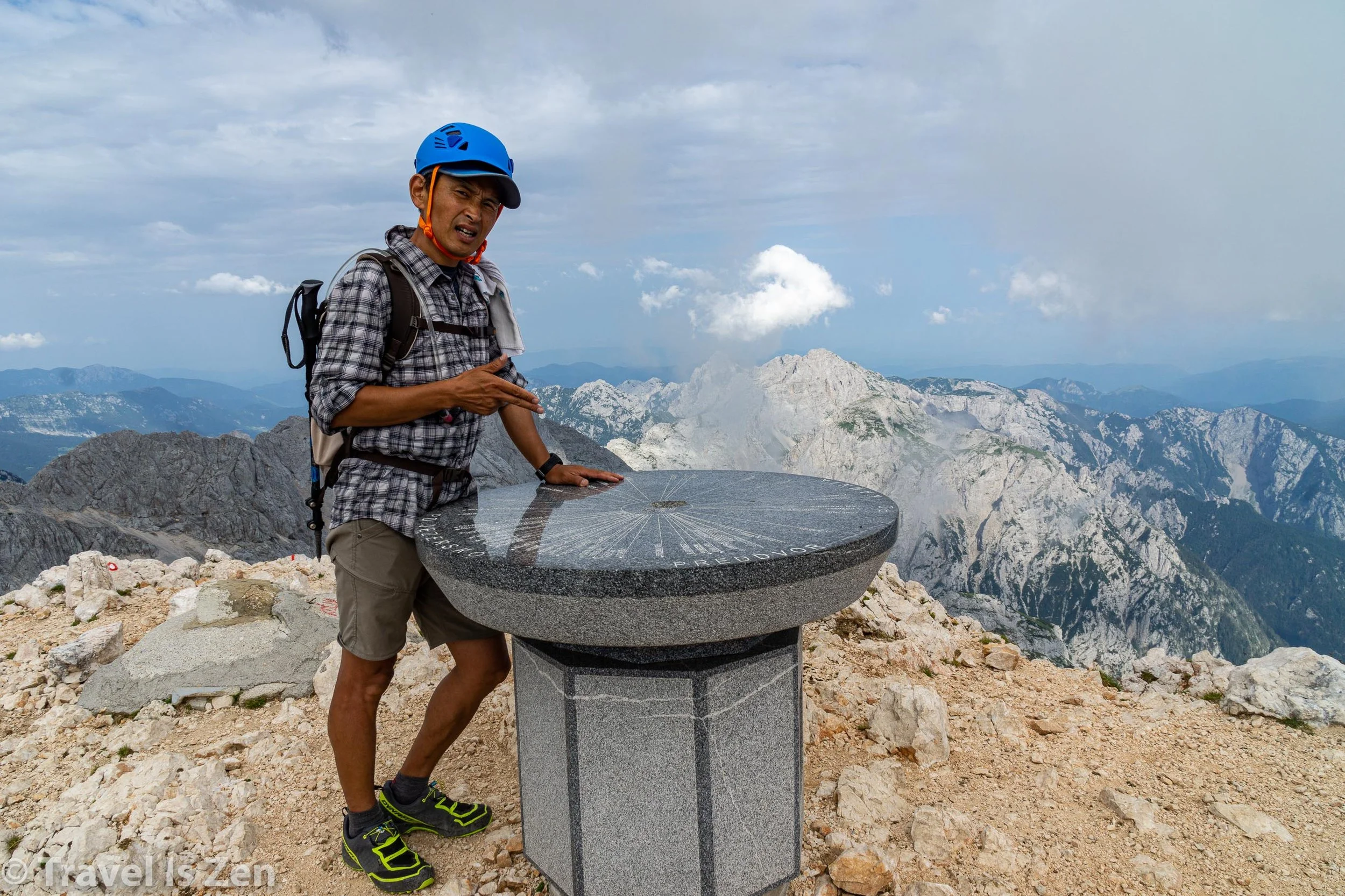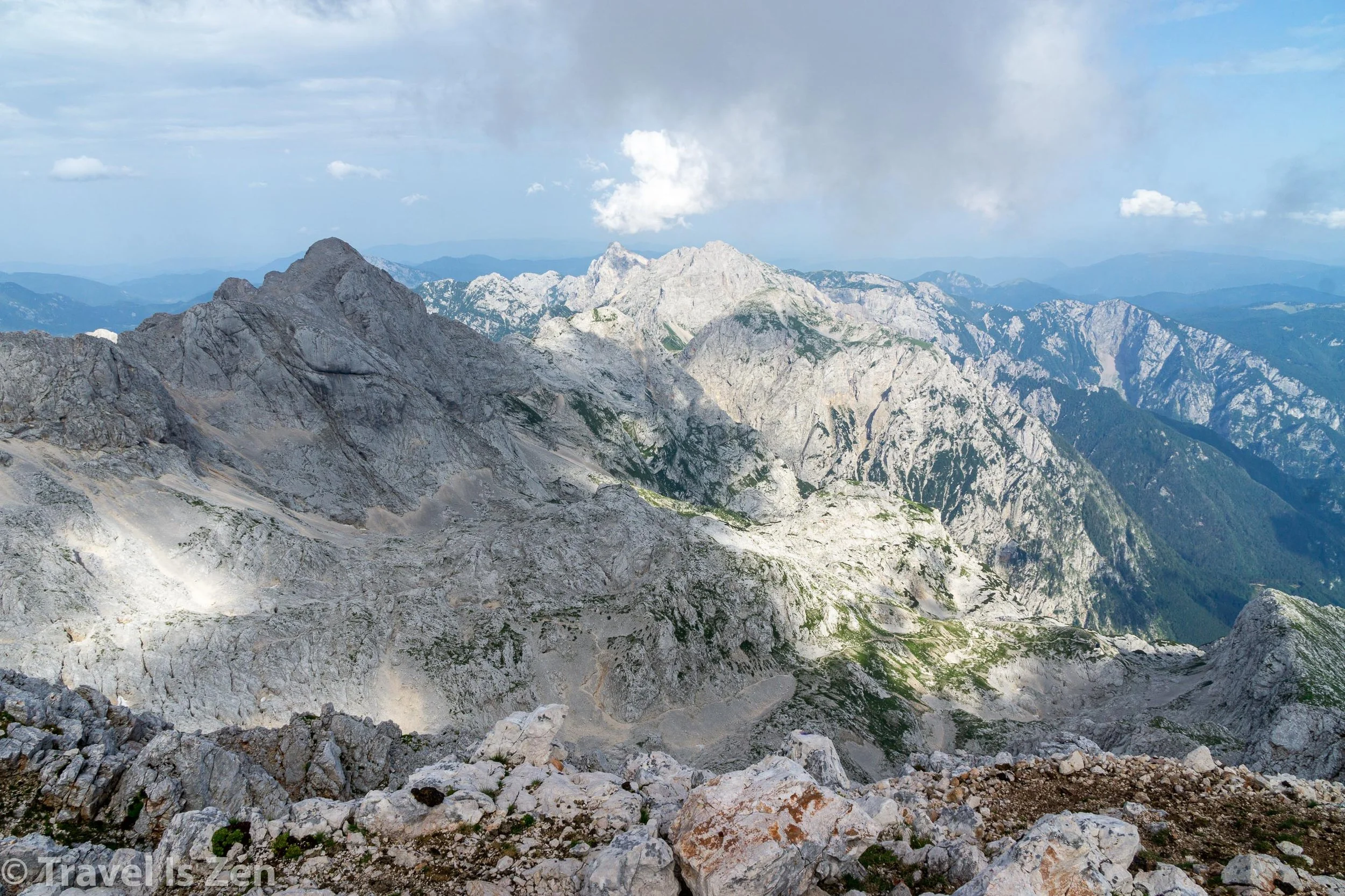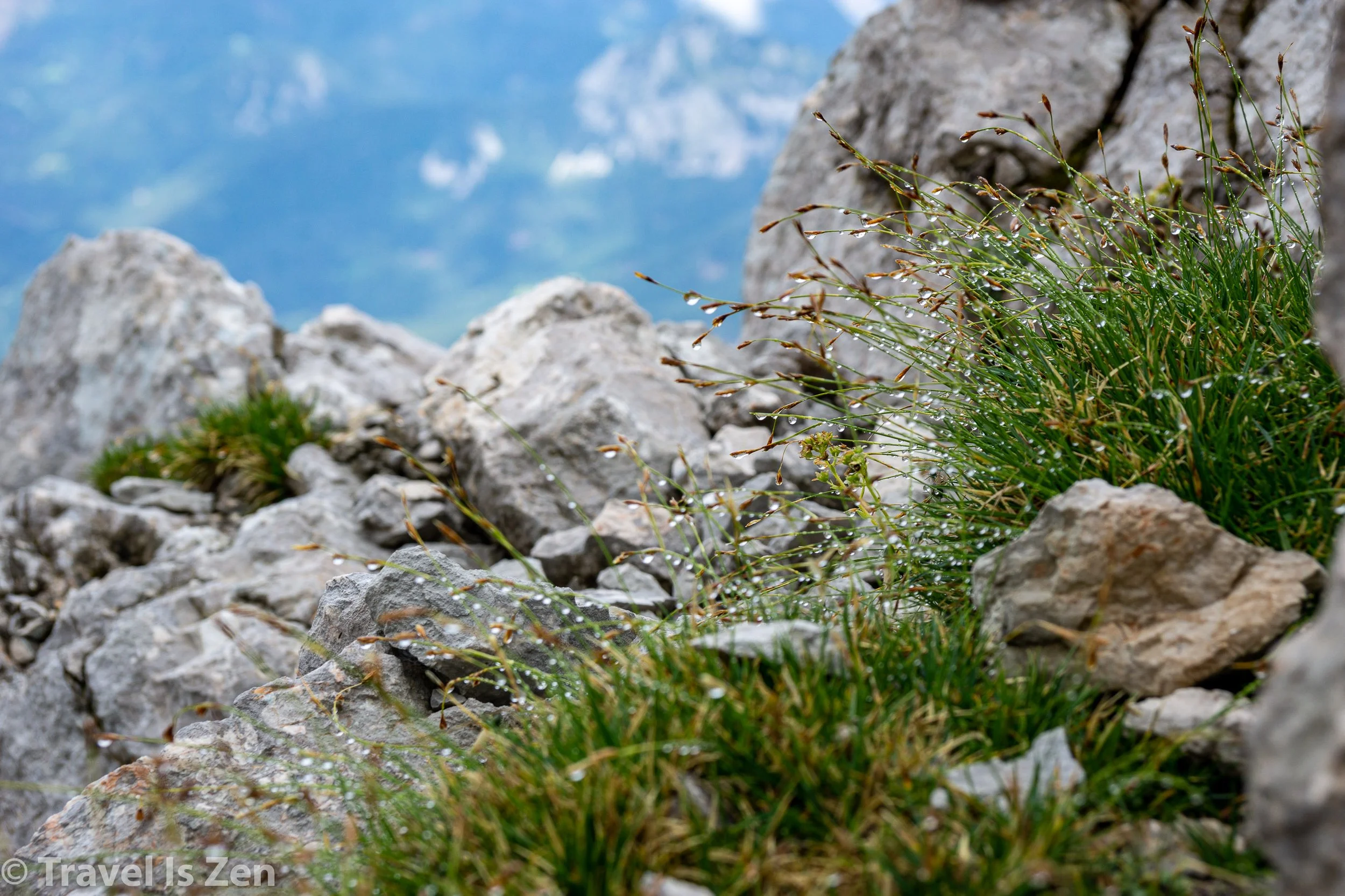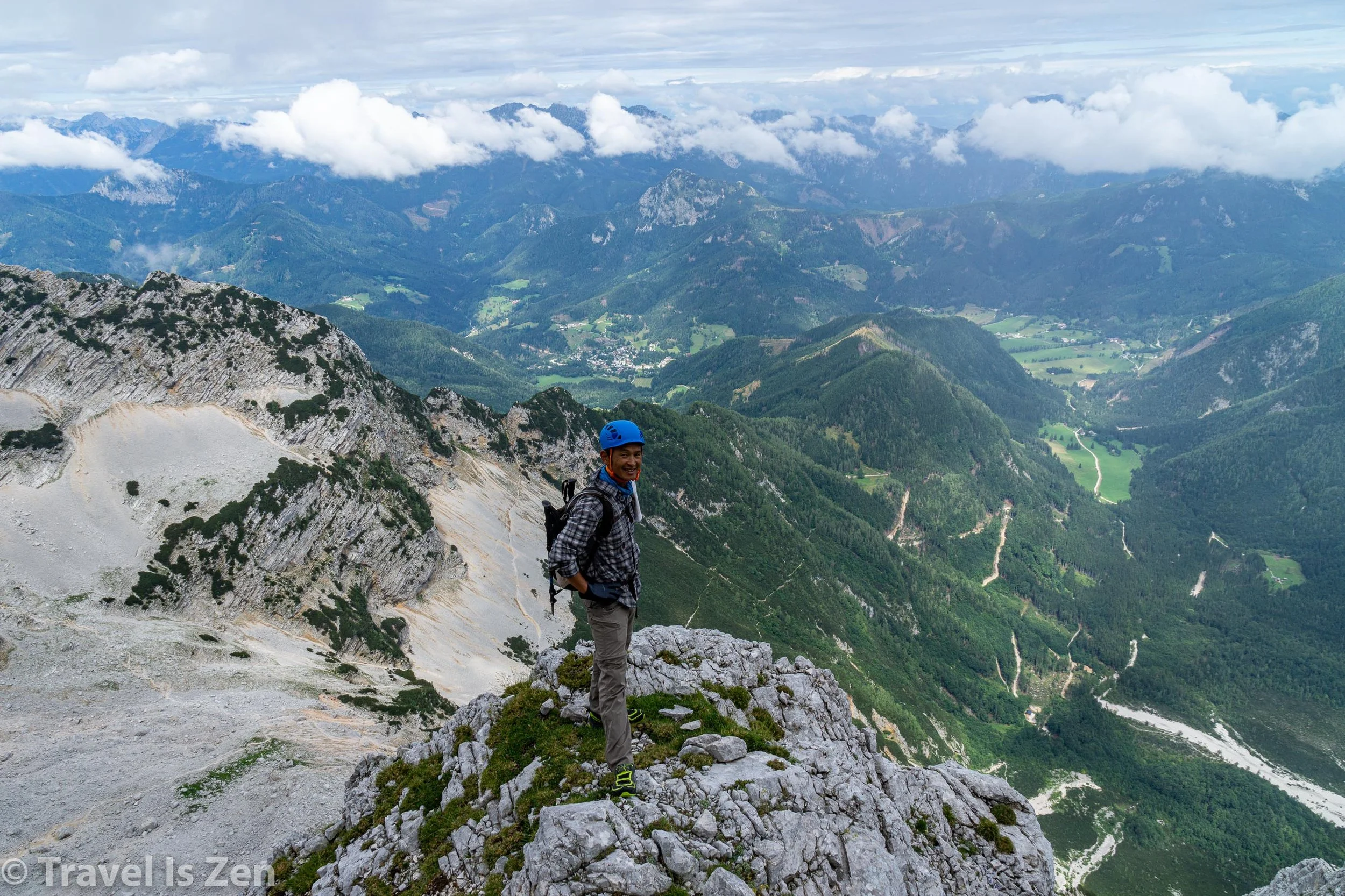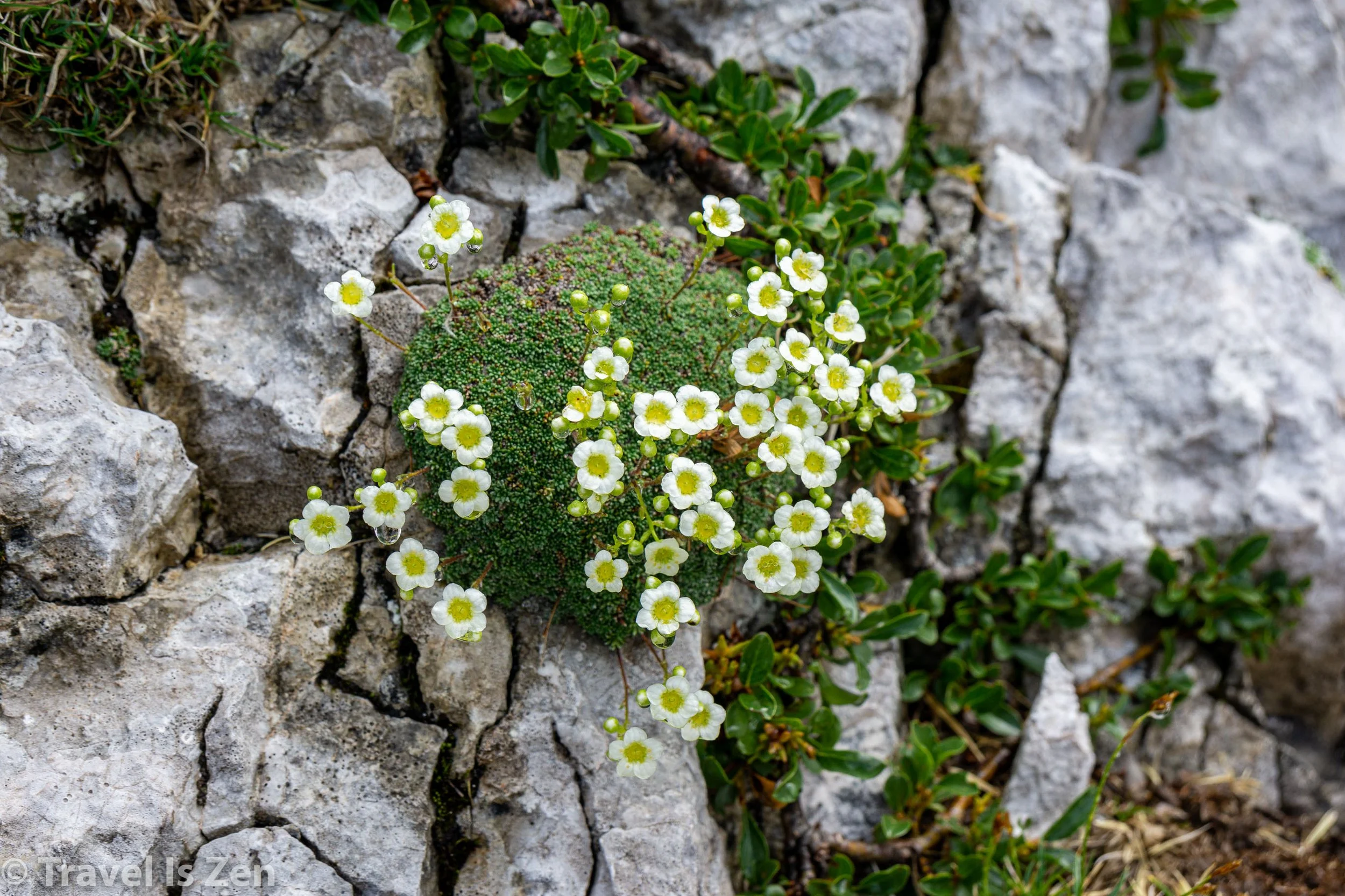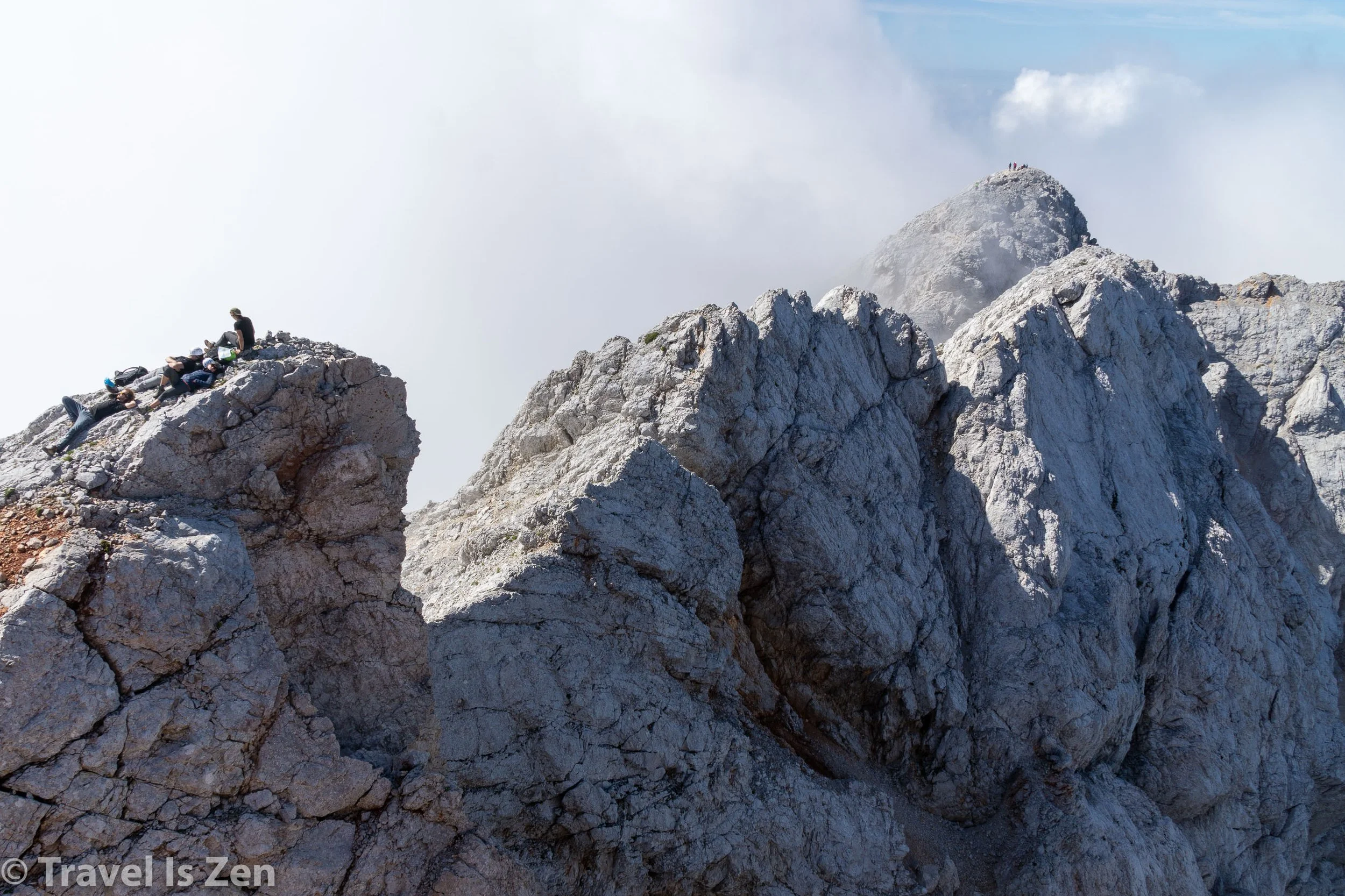Stage 3 of the Slovenian Mountain Trail: Kamnik Savinja Alps
OVERVIEW OF STAGE 3
The Kamnik Savinja Alps are a giant mountaineering playground. We had so much fun in this area that we stayed two weeks exploring the peaks of Ojstrica, Grintovec, Skuta, Kočna, Križ and more (Stage 3 area). We did not follow the guidebook much during this stage because some of the trails and/or huts were closed and we had to improvise our own route. Furthermore, the Cicerone guidebook assumes that you will through-hike from hut to hut in this section… with all of your gear… on via ferrata trails. Honestly, the route described in the book seems highly improbable, involving long distances, sometimes multiple peak summits in a single day, on technical trails. That was not realistic for us (or most novice mountaineers). To have fun in the Kamnik-Savinja, we recommend choosing a few base huts and planning day hikes from those huts, leaving your big bag at the base hut and hiking only with a light daypack. Minimize the number of times you need to move around with a large pack and choose easier routes on those days.
LODGING
The general outline of how we approached Stage 3:
Starting from Solčava, we walked the road to and through Logar Valley (Logarska Dolina), then hiked to Koča na Klemenči Jami under Ojstrica Mountain. We stayed at this mountain hut for two nights, summiting Ojstrica on day 2.
With full packs, we then hiked back down to Logar Valley the next day, passing by Rinka Waterfall, stopping for lunch at Frischaufov Dom and proceeding to Kranjska koča. This was a long day and the climb up to the Austrian border was tough because we had full packs. You might consider breaking this into two days, staying one night at Frischaufov Dom before heading to Kranjska hut.
We did several hikes from Kranjska koča, including Križ to Skuta Bivac and two separate roundtrips down into the town of Zgornje Jezersko. The town and valley are beautiful and the views of the Kamnik Savinja from below are worth the trip. It’s also the only place to replenish cash, which you will need in Stage 3.
Ceška Koča is just a mile from Kranjska koča, perched on a similarly high ridge across a gorge. There are two ways to get there from Kranjska koča. If you are confident in your mountaineering skills and pack weight, you can use the via ferrata along the Slovenian trail. Alternatively, you can hike down to the valley and take an easier route through the pine forest.
PHOTO INSPIRATION
Logar Valley and Ojstrica
Kranjska Koca, Zgorne Jezersko, Križ and Skuta Bivac
Ceška Koca, Grintovec, Kočna, and Skuta
TOTAL WALKING MILES/KM: 83 Miles
We did not follow the Cicerone guide much in Stage 3. We stayed 14 days, mostly doing day hikes. We summited: Ojstrica, Grintovec, Skuta, Dolgi Hrbrt, Kocna, and Križ. We also did a few light-day explorations in the valley areas, smaller viewpoints, and the town of Zgorne Jezersko.
COST PER DAY PER PERSON: $40.50
Average cost per day during stage 3 was USD $40.50 a person, which included mostly private rooms in mountain huts, meals and drinks (including desserts, wine and beer). On one occasion, we shared a room with one other person. We also chose the skupna (20+ floor mattresses laid side-by-side to cover the attic) during two nights at Ceška koča when there were no other guests at the hut. The skupna is always the cheapest option, but has the greatest risk of sharing sleeping space with strangers.
Note about private rooms: We found that hut owners are usually pretty generous in spreading out guests. If you are given a multi-bed room with bunks, do not panic. They typically will not put other people in the same room until all bunk rooms are full. Also, It is usually cheaper to choose a multi-bunk room over a “private” double bed room; check the posted prices in the hut and request exactly what you want. Rarely did we end up sharing the space anywhere on the trail… and when we did, we knew ahead of time that there would be other people.
EQUIPMENT
Approach shoes by Salewa and Dynafit replace worn Saucony
Required: helmet, mountaineering (aka “approach”) shoes, and leather gloves at a minimum. (See note below about where to buy equipment in Slovenia.)
Why a helmet? The trail is often near-vertical and rocks dislodged from climbers above can cause injury without a helmet. We purchased helmets at Decathalon sports store in Slovenia for ~$30.
Why approach shoes? The rock in Kamnik-Savinja is limestone; mountaineering shoes, which have rubber grips and toe caps, are a god-send. We initially had ordinary trail running shoes and they were torn to shreds within a week from the limestone. We ended up making a trip to a nearby Kibuba sports store to purchase appropriate footwear. We purchased two pair with Goretex for less than $150 each. They are extremely high quality and they lasted for the remainder of our trek.
Why leather gloves? Leather gloves will help prevent blisters on your hands when using the metal cables and also provide hand traction.
Recommended: If you are new to mountaineering and via ferrata trails or carrying a heavy pack, you might also want to have a via ferrata harness kit for safety. If you were to slip, the harness and clips prevent you from falling more than few feet when properly attached to the cable system. We purchased a via ferrata kit at Decathalon sports store in Slovenia for ~$95. Ojstrica was my first via ferrata experience, so I used the harness and carabiner the entire time. Once I got comfortable on the via ferratas, I used the kit less and less (and often never). My husband, who is more confident in his upper body strength than me, did not use a via ferrata kit until stage 6 in the Julian Alps. It’s really a personal decision.
It is also useful to have a water filter. Ceška koča and Koča na Klemenči Jami have only rainwater. Posted signs warn visitors that the water from the tap is not fit for drinking. The alternative is to buy expensive bottled water purchased at the huts. We have an American Red Cross rechargeable UV filter, which is small and light. We used it frequently while in the Kamnik-Savinja.
FOOD
Stage 3 features the best bread (kruh) on the whole trail at Ceška koča and the best struklj dessert on the whole trail at Kranjska koča. Seriously. The best! The pork and sauerkraut (segedine) is also really good at Ceška koča and Tanya at Kranjska hut surprised us with stuffed peppers! If the hut manager at Koča na Klemenči Jami asks if you want the pork bits on your eggs, say yes.
Additional Notes
The huts in stage 3 are noticeably more rustic than the huts in stages 1 and 2. Koča na Klemenči Jami had no electricity on the first day/night due to a power outage and had only a cold-shower. Ceška koča is over 100 years old and green-powered. The manager rarely turns the power on. If you wish to charge a phone, you will need to ask her to charge it for you; a headlamp is needed at night. Also, the hut has cold water only and it’s recommended that you filter the tap water for drinking (or buy the expensive bottled water). By comparison, Kranjska koča is downright luxurious! The common area has ample outlets for charging electronics and Tanya provides a hot shower for 5 euros. There is no wifi in any of these huts in stage 3.
The huts in Kamnik-Savinja were only full during the mid-August national holiday weekend. It is, however, prudent to call ahead for a reservation, as you will be assigned a room or bed on a first-come-first-choice basis. If you desire your own room, it’s best to call ahead and specify.
Slovenia’s sports equipment stores are fantastic, featuring all of the best European and international brands. If you forgot something at home or need to buy or replace any hiking or climbing gear, have no worries. You can find whatever you need at one of these stores in practically any larger Slovenian city: Kibuba, Intersports, Herves, Iglu, and Decathalon. Kibuba is probably the most highly regarded and a bit more expensive, but we found the prices cheaper than REI in the United States (and higher product quality). We purchased mountaineering shoes and a new Osprey backpack at Kibuba and paid far less than the same products in the U.S.A. We purchased our basic climbing kits at Decathalon, which has cheaper brand options than Kibuba.
